ALL GOING WELL I WILL SPEND A WEEK IN WATERFORD
My last visit to Waterford was in March 2023 which an originally been organised for September but I had to reschedule as my hotel booking was cancelled by the hotel as they changed their business model. I usually try to visit in September as part of my mission is to photograph new murals that result from the annual Walls Of Waterford programme. This year, because it was difficult to obtain a hotel booking at a reasonable price I am due to visit the city in early August rather than September but the good news is the event is scheduled for August 8th to 17th, 2025. In 2024, over 40 national and international artists created 55 large scale mural artworks around Waterford City and the surrounding areas and it is promised that 2025 will be even better which is why I have extended my visit by two days.
Review of Waterford as a Holiday Destination: Pricing Dynamics, Hospitality Trends, and Comparative Appeal
Waterford, Ireland’s oldest city, presents a compelling yet complex profile as a holiday destination. Its core appeal lies in a rich tapestry of Viking history, the iconic Waterford Crystal, and a burgeoning contemporary street art scene. Complementing these urban attractions, the wider County Waterford offers extensive natural landscapes and outdoor activities. While the city effectively packages its historical heritage, a nuanced perception exists among tourists, with some finding the urban core less vibrant than anticipated.
Hotel pricing in Waterford, particularly during the August peak season, reflects standard supply-and-demand dynamics, with rates increasing significantly. However, a comparative analysis reveals that Waterford’s peak-season accommodation costs are competitive with, and often lower than, those in other major Irish tourist cities like Dublin, Galway, and even Kilkenny. The perception of high prices may stem from general Irish tourism costs or comparisons to off-peak rates.
The prevalence of restaurant closures on Mondays and Tuesdays, even during the height of the holiday season, is a nationwide trend in Ireland. This practice is driven by economic realities, including low demand on these weekdays, significant staffing challenges, and a strategic prioritisation of operational efficiency and staff well-being over continuous, potentially unprofitable, operation.
Regarding the comparison with Kilkenny, evidence suggests that while Kilkenny is often preferred for its concentrated, vibrant pub-centric nightlife and charming evening ambiance, this preference is rooted in a specific type of “night out” experience rather than a universal superiority or lower cost. Waterford’s more spread-out urban layout impacts its perceived evening vibrancy.
Finally, the Walls of Waterford Festival is unequivocally a major and growing cultural attraction. Its evolution into a diverse, interactive event featuring world-class artists and a wide array of activities significantly enhances Waterford’s modern appeal, actively contributing to urban regeneration and attracting new visitor demographics.
Waterford as a Holiday Destination: A Blend of History, Culture, and Nature
Waterford distinguishes itself as a holiday destination through a unique combination of deep historical roots, iconic craftsmanship, and evolving cultural vibrancy, complemented by the natural beauty of its surrounding county.
Waterford’s Unique Selling Points and Core Attractions
The city’s primary identity is anchored in its status as Ireland’s oldest city, established by Vikings in 914 AD. This rich heritage is meticulously preserved and presented within the “Viking Triangle,” a designated cultural and heritage quarter. Within this compact, walkable area, visitors can explore the Medieval Museum, the Bishop’s Palace Museum, the Irish Museum of Time, and the Irish Silver Museum, along with Reginald’s Tower, Ireland’s oldest civic building. The “Freedom of Waterford Pass” further streamlines access to these historical sites, enhancing the visitor experience. An immersive “King of the Vikings Virtual Reality Experience” brings the city’s ancient past to life, allowing visitors to encounter legendary Viking leaders.
Beyond its ancient history, Waterford is globally synonymous with the House of Waterford Crystal. This factory is consistently highlighted as a quintessential visit, showcasing skilled artists crafting exquisite objects from molten crystal and representing the city’s most significant export. The opportunity to witness the intricate glass-blowing process firsthand and explore the extensive collection of luxurious crystal pieces is a major draw. The strategic consolidation of these historical and cultural assets within the Viking Triangle, coupled with immersive experiences like the VR tour and the convenience of a unified pass, represents a deliberate strategy to make Waterford’s rich, multi-layered heritage easily accessible and engaging for tourists. This approach aims to transform historical facts into a compelling experiential narrative, thereby enhancing visitor engagement and encouraging longer stays within the city centre.
Natural Landscapes and Outdoor Activities
The appeal of a Waterford holiday extends significantly beyond the city’s urban core, encompassing the diverse and unspoiled natural landscapes of County Waterford. The Waterford Greenway stands out as Ireland’s longest off-road walking and cycling route, stretching 48 kilometers from the city to Dungarvan. This scenic path, built along an old railway line, features towering viaducts and a vast tunnel, offering panoramic views and opportunities for outdoor recreation.
Further diversifying the region’s natural offerings is the Copper Coast Geopark, a UNESCO-recognized site renowned for its dramatic seascapes, secluded coves, and stunning cliffs, remnants of 19th-century copper mines. The Comeragh Mountains provide accessible trails for walkers, rewarding them with sweeping views of the countryside. For horticulture enthusiasts, the Mount Congreve Estate is celebrated as one of the “Great Gardens of the World,” boasting 30 hectares of intensively planted gardens with thousands of species. Additionally, Tramore Strand offers a popular 5-kilometer stretch of golden, sandy beach, ideal for relaxation or activities like surfing.
While some visitor feedback suggests the city of Waterford might be perceived as “small,” “boring,” or “depressing” when viewed in isolation , the abundance of these natural attractions throughout the county provides a powerful counter-narrative. This indicates that for many, the allure of a “Waterford holiday” encompasses the broader region’s offerings, rather than being confined solely to the urban centre. This broader appeal, particularly through its natural assets, positions Waterford as a versatile destination capable of attracting a wider range of travellers, including those seeking active getaways or scenic escapes.
The Evolving Cultural Scene: Street Art and Beyond
Waterford is not merely a city steeped in ancient history; it is also a dynamic hub of contemporary culture, largely propelled by the Waterford Walls Festival. This event has transformed the city into “Ireland’s largest street art festival and open air gallery”. Since its inception in 2014, the festival has consistently added new, vibrant murals, creating over 100 large-scale artworks that offer a “colourful contrast” to Waterford’s historical backdrop.
The festival’s explicit mission is to “transform and regenerate urban spaces” and “bring an explosion of colour to the many derelict buildings”. This goes beyond mere artistic expression; it represents a deliberate urban revitalisation strategy. By injecting new energy, colour, and conversation into areas that might otherwise be perceived as less attractive , the festival actively works to enhance the city’s visual appeal and overall atmosphere. An accompanying digital app, featuring augmented reality and artist information, along with guided walking tours, allows visitors to engage deeply with these artworks. This initiative positions Waterford as a city actively evolving and addressing past criticisms, using art as a powerful tool for urban renewal and to attract a younger, more diverse tourist demographic interested in contemporary culture, thereby broadening its appeal beyond traditional heritage tourism.
Common Tourist Sentiments and Perceptions
Tourist sentiments regarding Waterford are diverse, reflecting varied expectations and experiences. Many visitors express a strong fascination with the city’s Viking history, an appreciation for the craftsmanship of Waterford Crystal, and a positive impression of the local culinary scene. The vibrant street art, a result of the Waterford Walls Festival, frequently emerges as a delightful surprise for those exploring the city.
However, some visitors, particularly those whose focus remains strictly within the city centre, have articulated a perception of Waterford as a “small town,” “boring,” or lacking sufficient activities beyond its medieval museums. A recurring sentiment suggests that Waterford is “authentic and interesting but perpetually held back from its own potential”. Specific urban planning aspects, such as the waterfront being primarily parking, have also been noted as areas of missed opportunity. This disparity in perception often arises from differing visitor expectations and the extent of their exploration. Those who are unaware of the broader county’s extensive natural offerings or the evolving cultural scene might feel there is “not much to do”. The “spread out” nature of the city, in contrast to more compact urban centers, might also contribute to a less cohesive or bustling “vibe” that some tourists seek.
Conversely, positive experiences often highlight the kindness and welcoming nature of the local people, the quality of the food, and enjoyable pub nights. This indicates that while the city’s urban fabric might draw some criticism, its core attractions and the warmth of its inhabitants leave a lasting positive impression. Effective destination marketing for Waterford must therefore acknowledge and address these varied perceptions. It needs to not only highlight its strong, well-packaged unique selling points but also manage expectations regarding the city’s urban environment. There is an ongoing opportunity to bridge the gap between perceived potential and current visitor experience through continued urban development, improved pedestrian access, and clearer communication of the diverse experiences available across the entire county.
Analyzing Hotel Pricing in Waterford: Factors Behind Peak Season Costs
The observation that hotels in Waterford are perceived as “expensive,” particularly during the height of the holiday season, aligns with general tourism economics, though a comparative analysis provides crucial context.
Seasonal and Daily Price Fluctuations in Waterford
Hotel prices in Waterford exhibit clear seasonal and daily variations. August is consistently identified as a high-price month for accommodation, aligning with its status as the peak holiday season. During this period, average prices can see a substantial increase, for example, a 57% rise compared to the cheapest month. This surge in pricing during August is also implicitly supported by the timing of the Walls of Waterford Festival, a major event that draws significant crowds.
Daily price fluctuations are also evident, with Saturday typically being the most expensive day for hotel stays. Conversely, weekdays tend to offer more economical rates, though specific data on the absolute cheapest day varies across different sources. For instance, some data suggests Wednesday as the cheapest , while other sources point to Monday , or even Thursday or Friday. These discrepancies likely stem from variations in data collection methodologies, the specific hotel categories included in the averages, and the timeframes of data aggregation. Despite these inconsistencies, the overall trend confirms that peak holiday season, particularly August, is indeed a period of elevated hotel costs in Waterford. For travellers, this emphasises the importance of booking well in advance to secure more favourable rates, as general advice for Ireland suggests booking at least a month out for better deals , and for Waterford, booking two months ahead can yield significantly lower prices.
Comparative Hotel Pricing: Waterford vs. Key Irish Cities
The perception of Waterford hotels being “expensive” requires a comparative lens, particularly when juxtaposed with other popular Irish cities during peak season. While August sees elevated prices in Waterford, an examination of average rates in other major tourist destinations provides important context.
For instance, Kilkenny’s average August hotel rates can be comparable to, or even higher than, Waterford’s. Kilkenny’s average August weeknight price is reported at $274, with weekend rates averaging $320. In comparison, Waterford’s average August weekend price is noted at $209 , with overall average accommodation prices around €130 (approximately $140-150 USD). Specific Kilkenny hotels in August 2025 show prices ranging from $127 to $245 per night.
Furthermore, other prominent Irish tourist centres, such as Dublin (€320 average), Galway (€306 average), and Killarney (€303 average), generally exhibit higher average August prices than Waterford. The national average for 3-star hotels in Ireland is approximately €135.76 (around $147 USD) per night, and for 4-star hotels, it is €154.79 (around $168 USD) per night. This comparative analysis suggests that while Waterford’s prices are indeed higher in August due to peak season demand, they appear to be competitive with, and often below, the national averages and those of more established major tourist hubs. This reframes the initial premise, indicating that the perceived “expensiveness” might be more a reflection of the general cost of peak-season tourism in Ireland rather than Waterford being uniquely overpriced. From this perspective, Waterford may offer a relatively good value proposition for accommodation during the busiest holiday period.
Note: Prices are averages and subject to change based on specific hotel, booking lead time, and real-time demand. Currency conversions are approximate.
Underlying Economic Factors Contributing to Perceived High Costs
The primary factor driving higher hotel costs during peak season is the fundamental principle of supply and demand. During August, which is unequivocally the “height of the holiday season” in Ireland, the demand for accommodation surges due to increased domestic and international tourism. When demand outstrips the relatively inelastic supply of hotel rooms, especially for desirable dates, prices naturally increase. The significant percentage rise in prices observed during August directly reflects this market dynamic.
While the research does not explicitly detail the exact capacity of Waterford’s hotel sector, the sharp price increases during periods of high demand suggest that the available inventory of quality accommodation may become strained. This demand-supply imbalance allows hotels to command premium rates. The consistent advice for travellers to book well in advance to secure better deals further underscores that desirable rooms are quickly reserved, pushing up last-minute prices. This indicates that the perceived high cost is a direct consequence of market forces during periods of high demand, implying that while Waterford is successfully attracting tourists, its accommodation capacity might experience constraints during its busiest periods, leading to these price adjustments.
The Rationale Behind Restaurant Closures on Mondays and Tuesdays
The observation that restaurants in Waterford, even during the peak holiday season, often close on Mondays and Tuesdays is not an anomaly specific to the city but rather a common and economically rational practice across Ireland’s hospitality sector.
Industry-Wide Economic and Operational Considerations
The primary driver behind these closures is economic viability. Monday has traditionally been the slowest day of the week for restaurants, making it financially unfeasible for many establishments to remain open. Consumer behavior patterns show that people tend to indulge more in dining out from Thursday through Sunday, leading to a significant drop in trade on early weekdays. Operating seven days a week is a substantial undertaking, often requiring what is effectively a “second staff” to manage the additional shifts, which becomes “expensive fast” for independent businesses. The cost of maintaining full operations, including utilities, ingredients, and labor, often outweighs the limited revenue generated on these quieter days. This widespread operational decision, while economically sound for individual businesses, can create a notable inconvenience for tourists, particularly those planning multi-day stays or arriving early in the week. It highlights a tension between the operational realities of smaller, independent businesses and the expectations of a continuous, 7-day-a-week tourist economy. In contrast, larger hotel restaurants or chain establishments, with their greater scale and different business models, are typically able to absorb slower days and remain open seven days a week.
Staffing Challenges and Work-Life Balance in the Hospitality Sector
Beyond financial considerations, staffing presents a critical challenge that influences these operating patterns. The Irish hospitality sector faces a “massive shortage of staff,” compounded by increasing labor costs, making it difficult to recruit and retain sufficient personnel to operate continuously seven days a week. For many locally owned establishments, which often operate with a smaller, dedicated team, closing on slower days provides essential rest for employees and helps maintain a healthier work-life balance. These guaranteed days off, often falling on Monday and Tuesday, are highly valued by staff for personal appointments, family time, and general recuperation.
Furthermore, some restaurants may utilise these quieter weekdays for staff training, particularly for new managers, waitstaff, or chefs. Were they to remain open during these training periods, the quality of service might be compromised for customers. This implies a strategic trade-off: businesses prioritise delivering high-quality service on their busiest, most profitable days by ensuring their core staff is well-rested and experienced, rather than stretching resources thinly across all seven days. These closures, therefore, reflect a broader systemic issue within the Irish hospitality labor market, where businesses are making pragmatic choices to ensure sustainable operations and staff retention, even if it means limiting service hours during what is still considered the peak tourist season.
Implications for Dining Options in Waterford During Peak Season
The prevalence of Monday and Tuesday closures means that even during the “height of the holiday season,” tourists visiting Waterford should anticipate limited dining options from independent and smaller, locally-owned restaurants. While overall tourist numbers are higher during peak season, the daily demand on these specific weekdays might still not justify full operation for all establishments. The observation that “hotels not at full capacity, less tourists and locals aren’t gonna eat out then nights every week” suggests that even in peak season, certain weekdays remain relatively quiet, making 7-day operation economically unfeasible for many smaller eateries.
This situation necessitates pre-planning for visitors. Tourists are advised to check opening hours in advance and make reservations, particularly for desired local restaurants. Larger hotel restaurants or chain establishments are generally more likely to be open seven days a week and can serve as reliable alternatives on these days. This highlights a potential area where the expectations of a continuous tourist service might clash with the operational realities of local businesses. It also points to a potential opportunity for local tourism bodies to explore resources or incentives that could support businesses in extending operating hours during peak season, if economically feasible, to further enhance the overall visitor experience.
Waterford vs. Kilkenny: A Comparative Look at Nightlife and Accommodation Choices
Claims about tourists preferring Kilkenny for accommodation due to its nightlife highlights a key comparative dynamic between the two cities, influenced by both perceived vibrancy and urban layout.
Assessment of Nightlife Offerings in Both Cities
Kilkenny generally enjoys a stronger reputation for nightlife, frequently described as superior “by a landslide”. It is particularly lauded for its vibrant pub scene, characterised by “great pubs all within walking distance of each other”. This concentration of establishments contributes to a lively and easily navigable evening atmosphere, which many visitors recall positively from experiences such as stag or hen parties.
Waterford, by contrast, is perceived as “better for pub nights” in a general sense , but less dynamic for a comprehensive “night out” experience. Its city layout is described as “spread out,” which can dilute the sense of a concentrated, bustling nightlife atmosphere. A critical detail, however, is that while Kilkenny is praised for its nightlife, it reportedly “has no nightclub anymore” and its pubs are generally “dearer than Waterford”. This suggests that Kilkenny’s perceived superiority in nightlife is rooted in a traditional, compact pub experience rather than a modern clubbing scene or affordability. The strong positive perception of Kilkenny’s nightlife, therefore, appears to be driven by the convenience and density of its pub offerings, which create a cohesive and vibrant social environment, even if it lacks late-night clubbing options or is more expensive.
Tourist Preferences and Perceptions Influencing Accommodation Decisions
The premise that many tourists are inclined to stay in Kilkenny hotels due to its better nightlife is strongly supported by anecdotal evidence from various travel forums. Many visitors explicitly state a preference for Kilkenny as a “base” for multi-day stays, citing its “more pleasant” evenings for walking around and visiting pubs. This suggests that the decision to choose accommodation is not solely driven by the quality of individual nightlife venues but by the overall evening ambiance and perceived ease of enjoying post-sightseeing activities.
Waterford, in contrast, is frequently described as a suitable “day trip” from Kilkenny, with many visitors feeling that “a day was more than enough” to explore its main attractions. The perception that there is “not much to see in Waterford, really” beyond the crystal factory or medieval museums contributes to this tendency for shorter stays. Kilkenny’s ability to offer “lots of things to do within a 60-90 minute drive” also positions it as a convenient central base for exploring the wider region, allowing tourists to access diverse attractions while returning to a vibrant evening scene. This indicates that for multi-night stays, the overall “vibe” and evening experience of a city are critical factors, potentially more influential than individual daytime attractions or even direct accommodation costs. The perceived value of a more vibrant and enjoyable evening atmosphere in Kilkenny often outweighs other considerations for many travellers.
The Impact of City Layout and Vibe on Visitor Experience
The physical layout and inherent “vibe” of the two cities play a crucial role in shaping visitor experience and influencing accommodation choices. Kilkenny is consistently described as “small and contained” , with its attractions and pubs “all within walking distance”. This compactness creates a sense of bustling activity and fosters a “great vibe” , making it easy for tourists to transition seamlessly between dining, entertainment, and their accommodation.
In contrast, Waterford is characterised as “spread out”. This dispersed layout can dilute the sense of a cohesive, vibrant urban core, even if individual establishments are commendable. The difference in urban density is vividly illustrated by an anecdote where 1400 cruise ship passengers in Waterford went largely unnoticed, whereas a similar influx in Kilkenny would make it impossible to move. This suggests that even with attractions, the lack of a concentrated, high-energy urban core can impact the perceived liveliness of the city, particularly in the evenings. Descriptions of Waterford city centre as “grey and dark” or “depressing” further underscore how urban design directly affects the overall visitor experience and atmosphere. This highlights that urban planning and placemaking initiatives are as critical as individual attractions in shaping a city’s appeal as an overnight destination. For Waterford, continued efforts to enhance walkability, create more concentrated vibrant zones, and improve the aesthetic appeal of its urban core beyond the Viking Triangle are essential to compete effectively with cities like Kilkenny for multi-night tourist stays.
The Walls of Waterford Festival: A Major Cultural Attraction
The Walls of Waterford Festival has firmly established itself as a significant and impactful cultural attraction, playing a pivotal role in shaping the city’s modern identity and enhancing its appeal to a diverse range of visitors.
Evolution and Impact of the Festival on Waterford’s Identity
The Walls of Waterford Festival is widely recognised as “Ireland’s largest street art festival and open air gallery”. Since its inception in 2014, the festival’s core mission has been to “transform and regenerate urban spaces” across Waterford. This involves bringing “an explosion of colour to the many derelict buildings” and injecting “new energy, colour, and conversation to the city”. Over the years, the festival has created more than 100 large-scale murals throughout the city and extending into the county, establishing a vibrant street art scene that offers a compelling “colourful contrast” to Waterford’s ancient Viking history.
This initiative extends beyond mere aesthetic enhancement; it functions as a strategic urban renewal project. By actively transforming the urban landscape and fostering a dynamic cultural environment, the festival directly addresses some of the historical criticisms regarding Waterford’s urban environment, such as perceptions of it being “depressing” or “grey and dark”. It injects vibrancy and modernity, thereby enhancing the city’s overall attractiveness as a holiday destination and potentially encouraging longer stays. The festival’s success in attracting world-class talent and offering new interactive experiences demonstrates a sophisticated approach to cultural tourism development.
Highlights of the August 2025 Programme
The 11th edition of the Waterford Walls Festival is scheduled from August 8th to 17th, 2025. This promises to be one of the most exciting programs to date, featuring an electric line-up of 34 world-class artists, both Irish and international, who will transform walls across the city over ten days of live mural painting.
Key international artists confirmed for 2025 include Rocket01 (UK), Nerone (France), and KMG (Scotland), whose large-scale murals will further enrich Waterford’s growing collection of renowned street art. A brand-new feature for this edition introduces citywide art trails, led by acclaimed stencil artist Dotmasters (UK) and tile installation artist Blackdoors (France). These trails offer festival-goers a unique way to explore hidden corners of Waterford through playful, smaller-scale artistic interventions.
The Festival Hub at the Forum will serve as the central gathering point, hosting live music, craft beer from local breweries, and a rotating selection of local food trucks, fostering a vibrant atmosphere for artists, locals, and visitors alike. Other anticipated program highlights include the much-anticipated Street Party at Pocket Park on Saturday, August 16th, which will bring Thomas Street alive with an open-air celebration of street culture, featuring live painting sessions, breakdancing performances from Rhythm Walls, and a full line-up of DJs. The ever-popular Graffiti Jam will also return, bringing together top Irish graffiti artists for a day of spontaneous creativity and large-scale collaboration. Additionally, the “Culture Connect” program will offer deeper engagement with street art through a series of talks, film screenings, and interactive public events, inviting audiences to explore the stories, politics, and people behind the art. This comprehensive and diverse program, which extends beyond mere mural viewing, aligns with broader trends in experiential tourism, where visitors seek active engagement and unique cultural immersion. It provides compelling reasons for visitors to plan their trip specifically around these dates, potentially increasing their length of stay and local spending during what is already a peak season.
The Festival’s Role in Enhancing Waterford’s Tourist Appeal
The Walls of Waterford Festival is undeniably a significant draw, adding a modern, dynamic layer to Waterford’s historical identity. It acts as a powerful counter-narrative to any lingering perceptions of the city as “boring” or lacking vibrancy. By actively transforming the urban landscape and offering a contemporary cultural experience, the festival directly addresses the need for “depth” beyond superficial tourism. It appeals to a different demographic than traditional heritage tourists, attracting those interested in urban art, music, and modern culture.
The festival is not merely an event but a strategic asset that helps diversify Waterford’s tourism portfolio, making it attractive to a broader audience and enhancing its overall image as a dynamic, evolving city. Its success is supported by various local and national bodies, including Waterford City and County Council, The Arts Council, and Creative Ireland. This robust backing further solidifies its position as a major cultural institution. The festival provides a compelling reason for repeat visits and for tourists to choose Waterford over other destinations that might lack such a distinctive contemporary cultural offering.
Conclusion and Strategic Recommendations
Waterford presents itself as a multifaceted holiday destination, successfully blending its profound Viking history and iconic crystal heritage with a vibrant, evolving contemporary cultural scene and the extensive natural beauty of its surrounding county. While the city has made significant strides in packaging its historical attractions, perceptions of its urban core can be mixed, sometimes described as less vibrant or “spread out” compared to more compact cities.
The analysis of hotel pricing indicates that while August is indeed a peak season with elevated costs, Waterford’s accommodation rates are competitive within the broader Irish tourism landscape, often offering better value than major cities like Dublin, Galway, or even Kilkenny. The perception of “expensive” is likely relative to off-peak rates or general expectations of Irish travel costs.
The closures of restaurants on Mondays and Tuesdays, even during peak season, are a common operational reality for independent hospitality businesses across Ireland. These decisions are driven by a combination of low demand on these specific weekdays, significant staffing challenges, and a strategic prioritisation of operational efficiency and staff well-being. Tourists should be advised to plan their dining experiences accordingly, particularly for local establishments.
Regarding the comparison with Kilkenny, the evidence suggests that while Kilkenny is often perceived to have superior nightlife, this preference is largely due to its concentrated, walkable pub scene and overall charming evening ambiance, rather than lower prices or the presence of nightclubs. Waterford’s more dispersed urban layout contributes to a different evening experience, influencing tourist decisions to use Kilkenny as a preferred overnight “base” for its perceived holistic evening appeal.
The Walls of Waterford Festival stands out as a major and increasingly significant cultural attraction. Its evolution into a diverse, interactive event featuring world-class artists and a broad program of activities actively contributes to urban regeneration, counterbalances older perceptions of the city, and attracts new visitor demographics interested in contemporary art and culture.
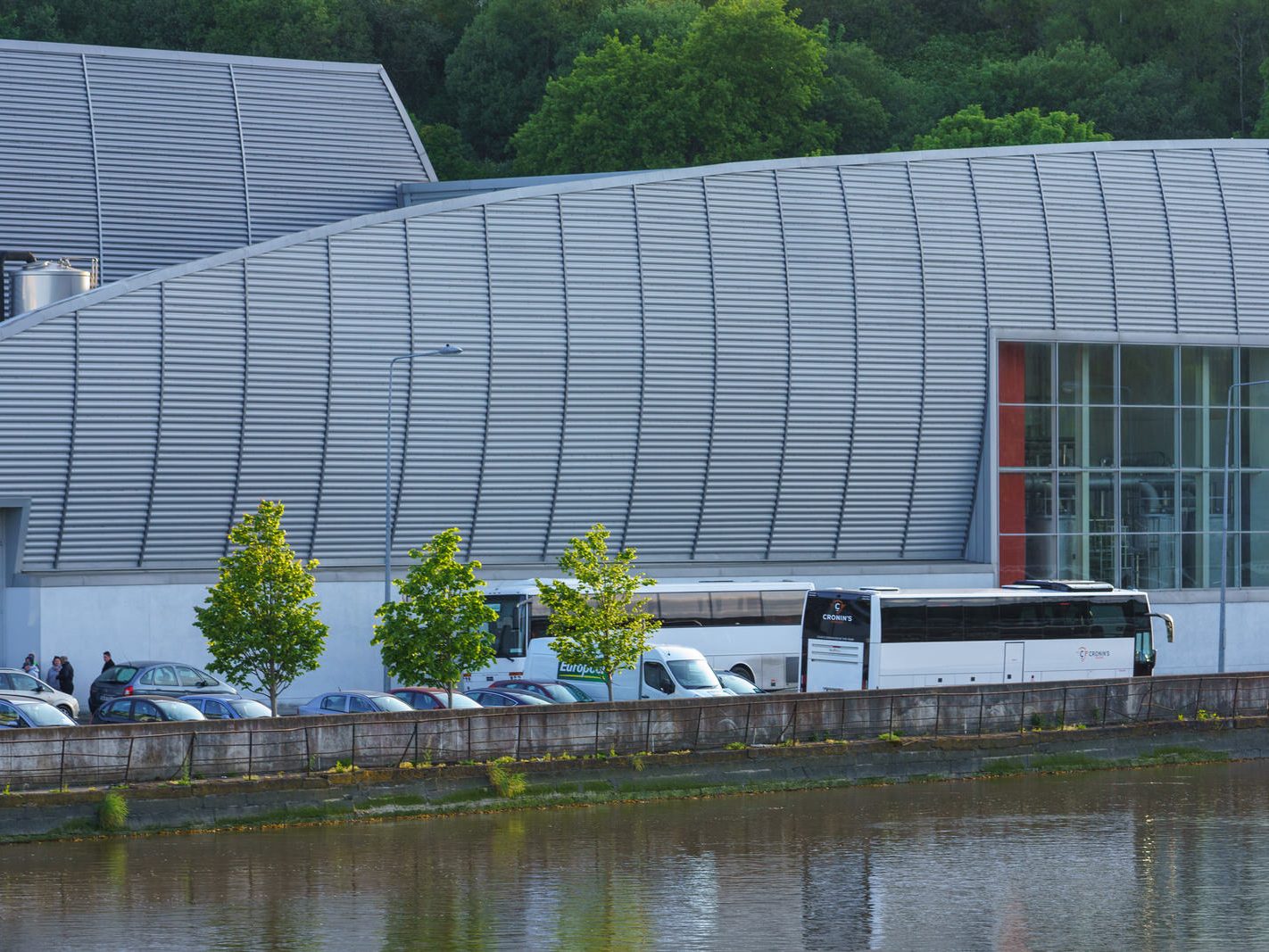
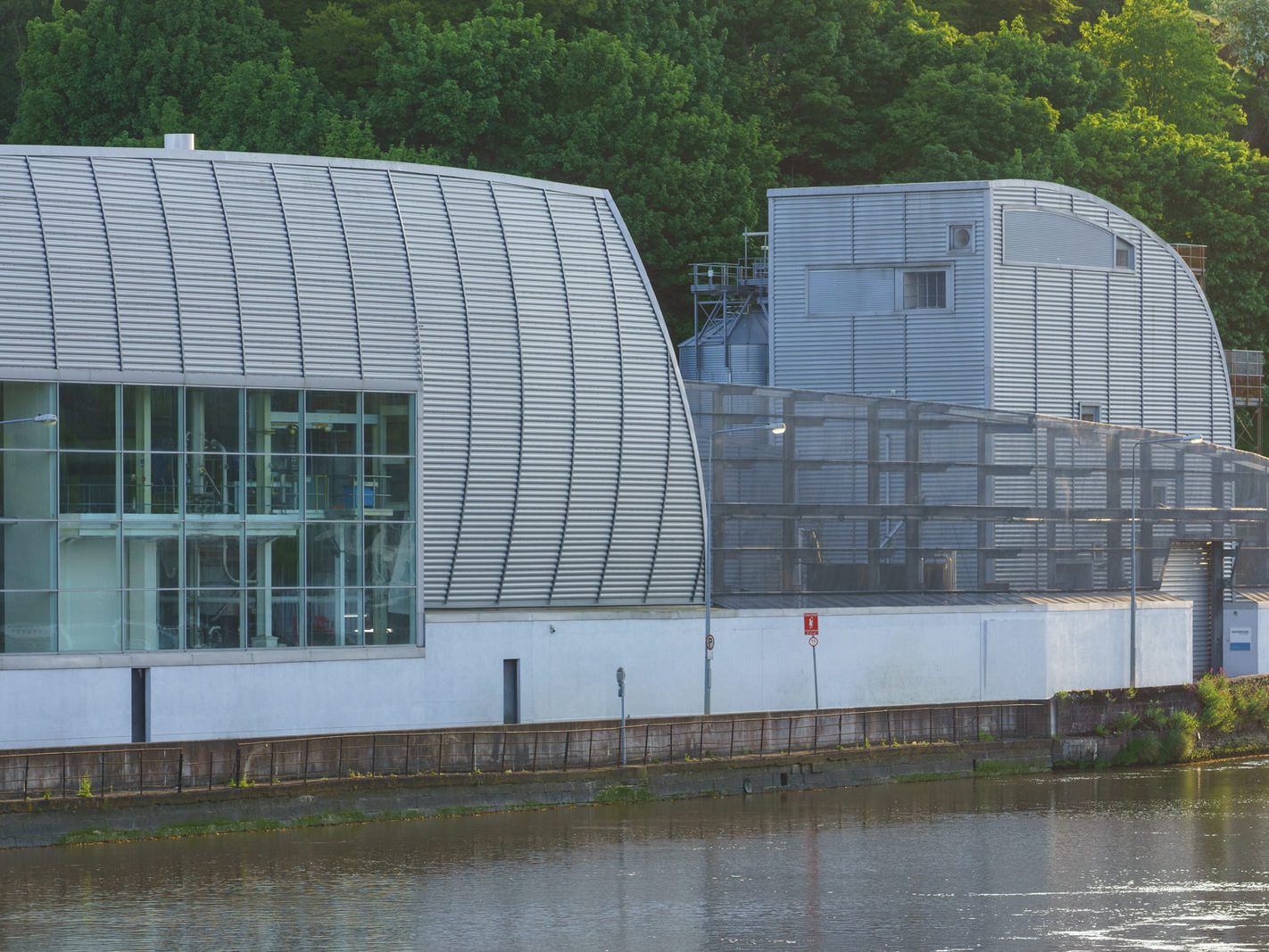

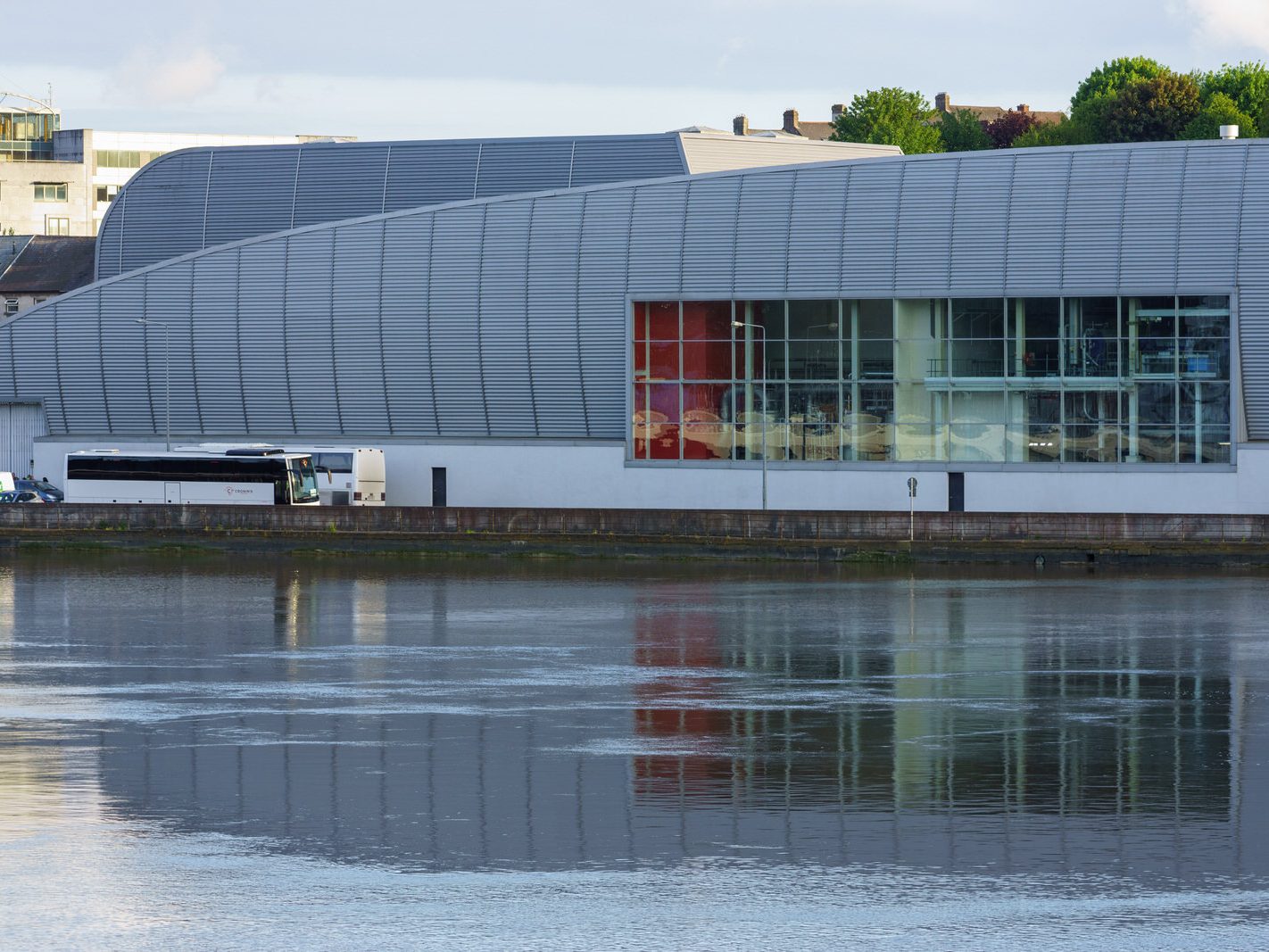
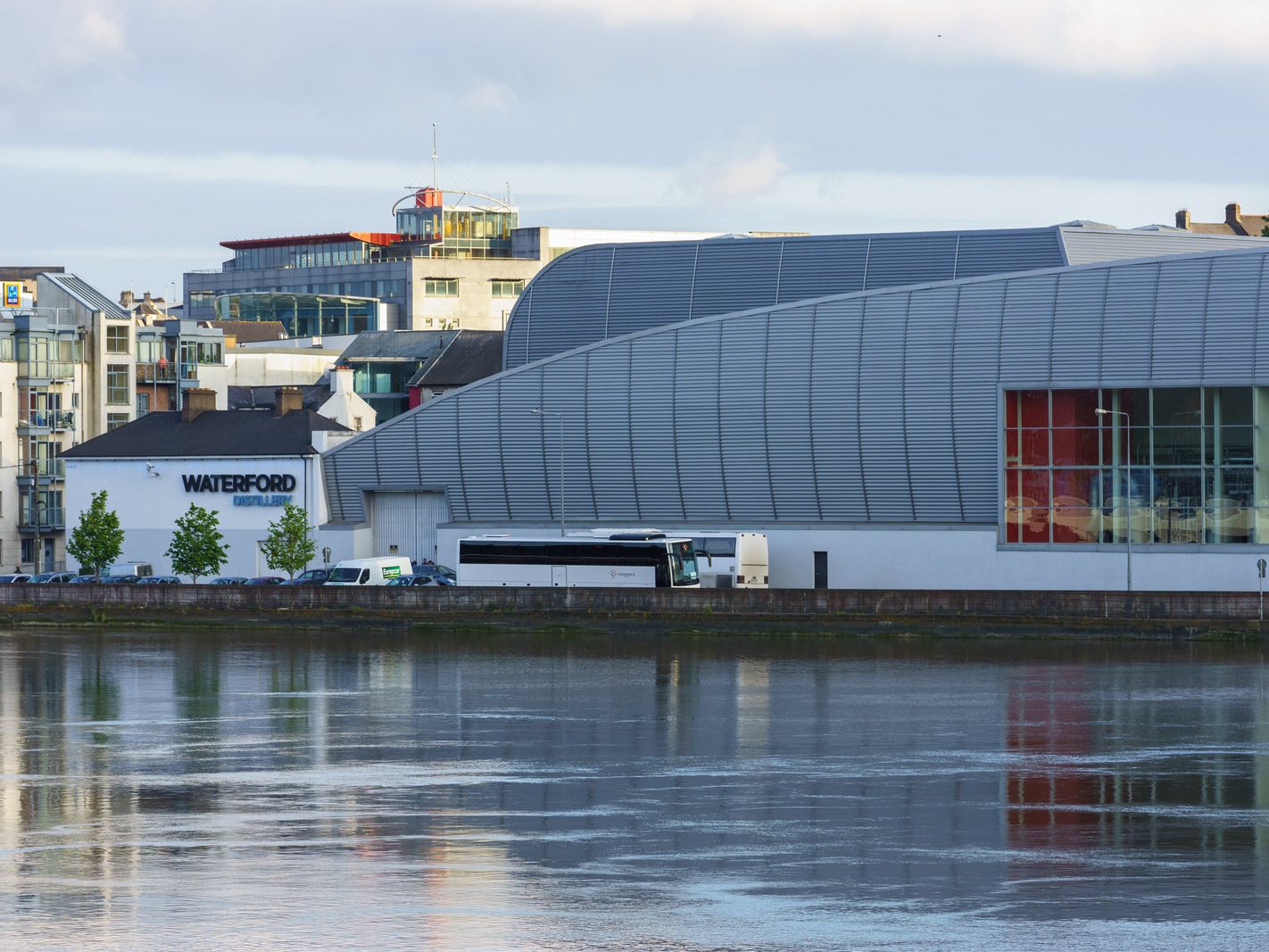
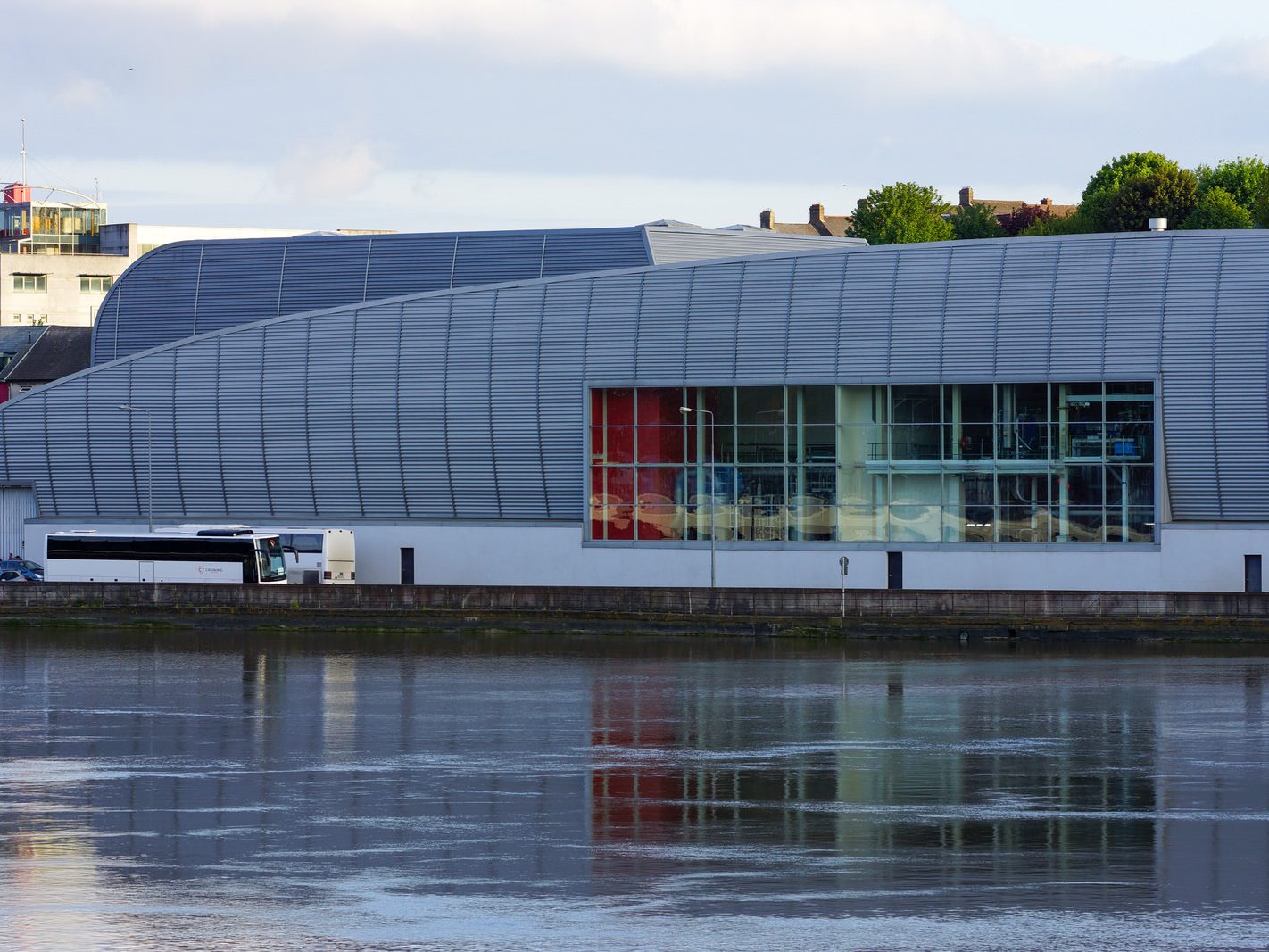
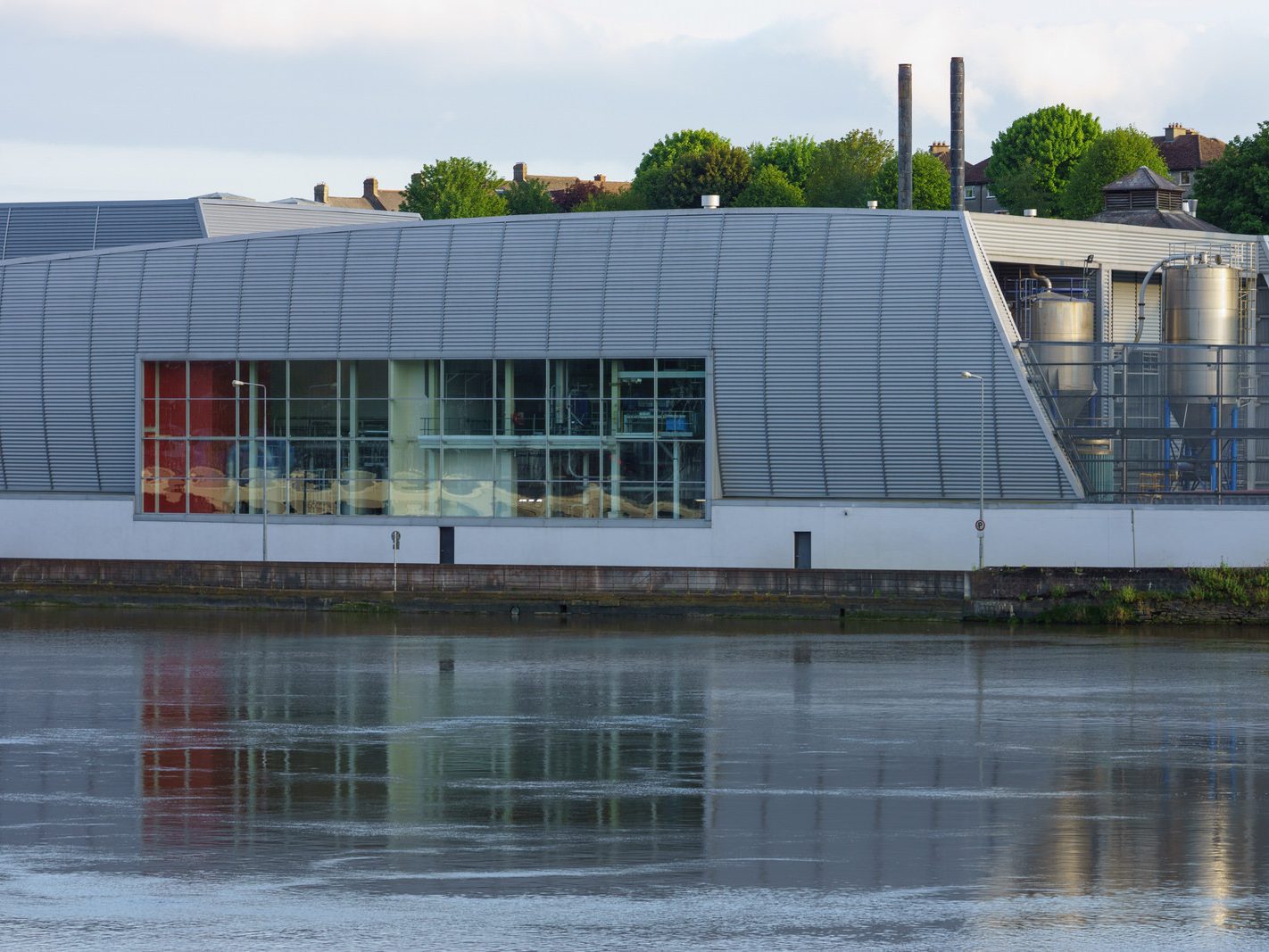
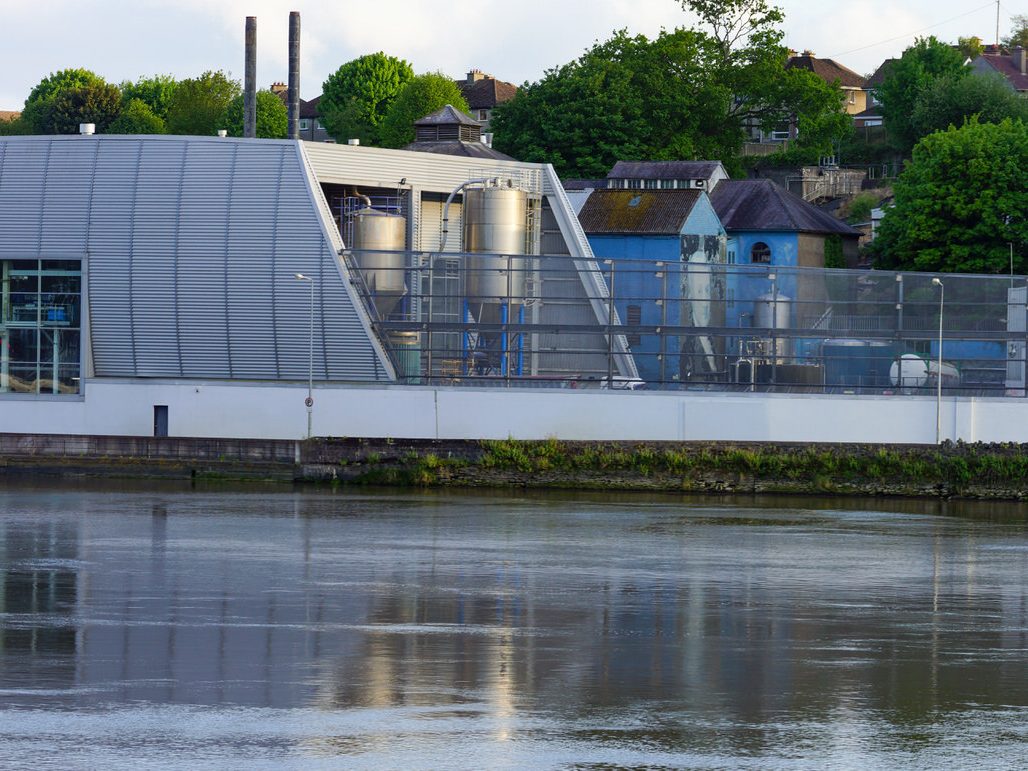
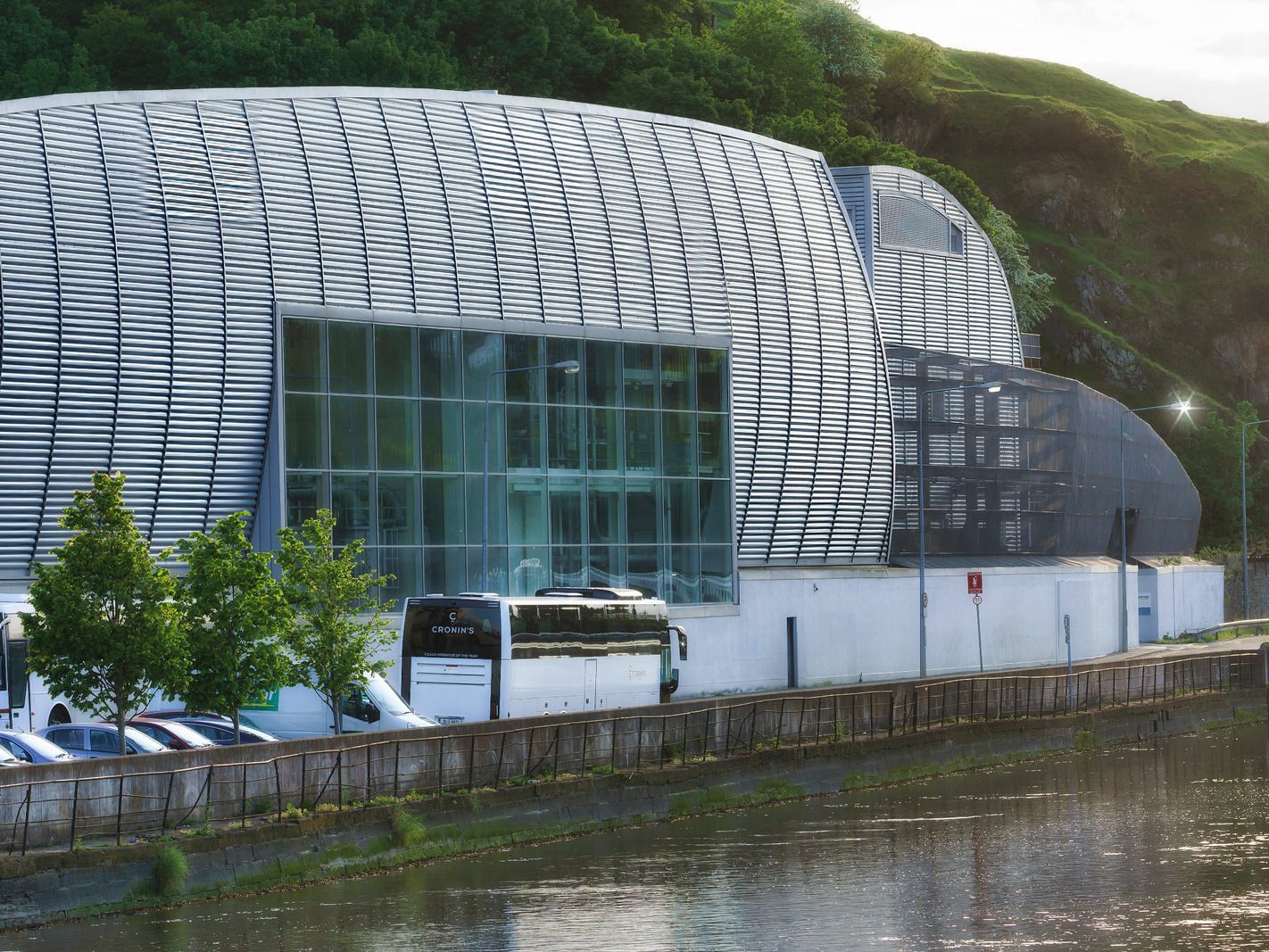
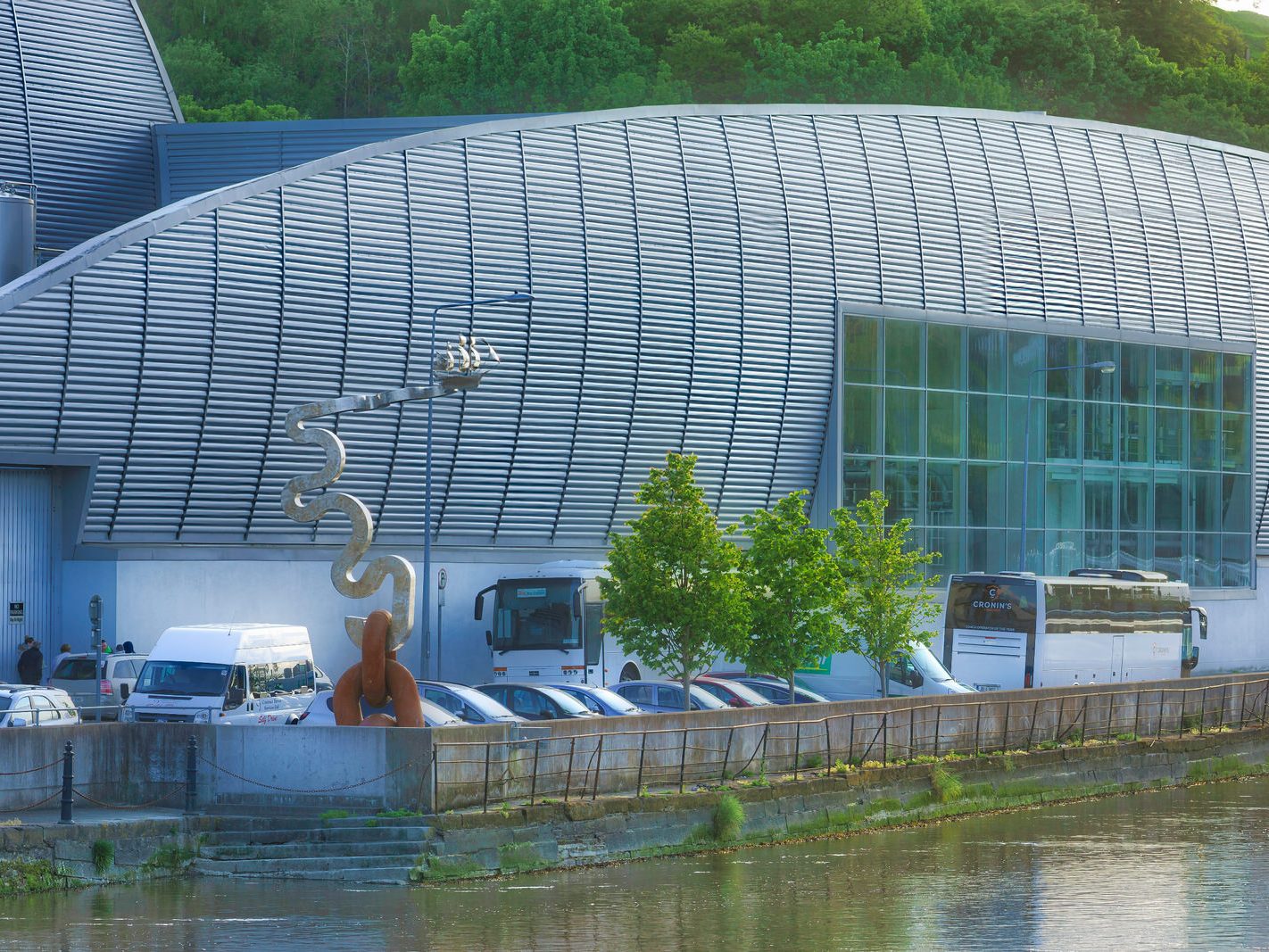
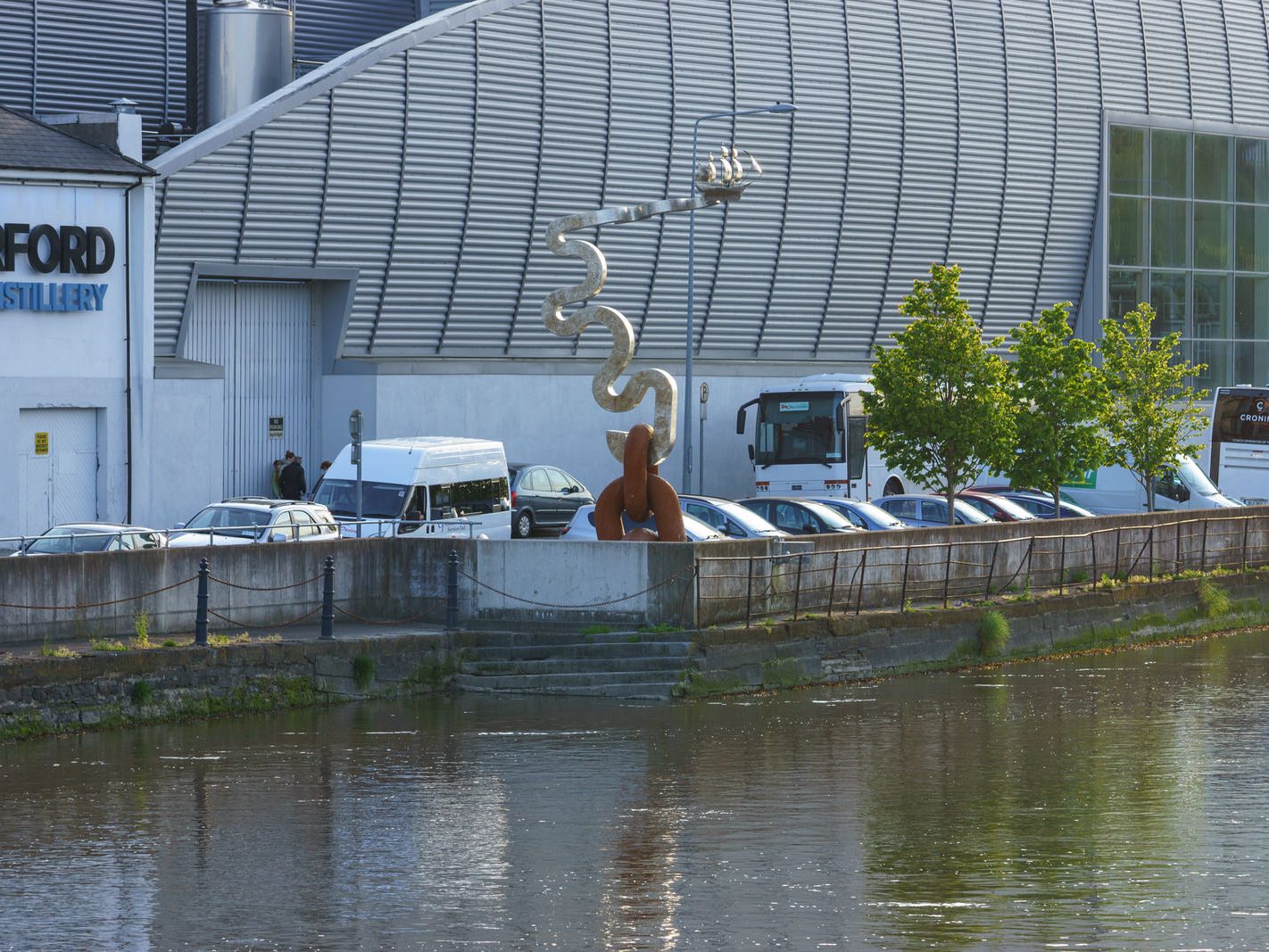
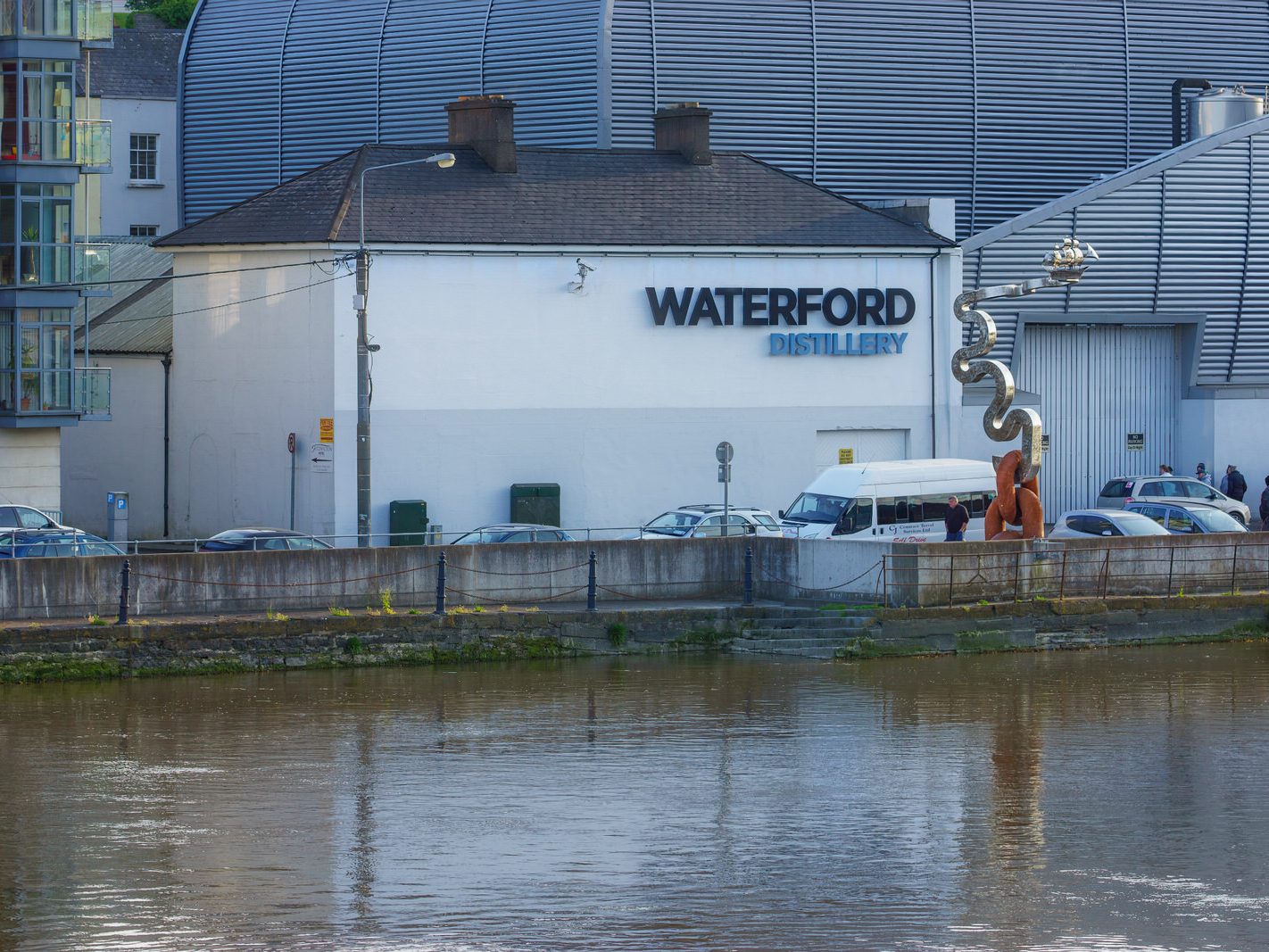
![THE PEOPLES PARK IN WATERFORD [26 MAY 2016]-221084-1](https://excellentstreetimages.com/UrbanCartographerExploresWaterford/wp-content/uploads/2025/05/THE-PEOPLES-PARK-IN-WATERFORD-26-MAY-2016-221084-1-1422x1067.jpg)
![THE PEOPLES PARK IN WATERFORD [26 MAY 2016]-221083-1](https://excellentstreetimages.com/UrbanCartographerExploresWaterford/wp-content/uploads/2025/05/THE-PEOPLES-PARK-IN-WATERFORD-26-MAY-2016-221083-1-1422x1067.jpg)
![THE PEOPLES PARK IN WATERFORD [26 MAY 2016]-221082-1](https://excellentstreetimages.com/UrbanCartographerExploresWaterford/wp-content/uploads/2025/05/THE-PEOPLES-PARK-IN-WATERFORD-26-MAY-2016-221082-1-1422x1067.jpg)
![THE PEOPLES PARK IN WATERFORD [26 MAY 2016]-221081-1](https://excellentstreetimages.com/UrbanCartographerExploresWaterford/wp-content/uploads/2025/05/THE-PEOPLES-PARK-IN-WATERFORD-26-MAY-2016-221081-1-1422x1067.jpg)
![THE PEOPLES PARK IN WATERFORD [26 MAY 2016]-221080-1](https://excellentstreetimages.com/UrbanCartographerExploresWaterford/wp-content/uploads/2025/05/THE-PEOPLES-PARK-IN-WATERFORD-26-MAY-2016-221080-1-1422x1067.jpg)
![THE PEOPLES PARK IN WATERFORD [26 MAY 2016]-221079-1](https://excellentstreetimages.com/UrbanCartographerExploresWaterford/wp-content/uploads/2025/05/THE-PEOPLES-PARK-IN-WATERFORD-26-MAY-2016-221079-1-1422x1067.jpg)
![THE PEOPLES PARK IN WATERFORD [26 MAY 2016]-221078-1](https://excellentstreetimages.com/UrbanCartographerExploresWaterford/wp-content/uploads/2025/05/THE-PEOPLES-PARK-IN-WATERFORD-26-MAY-2016-221078-1-1422x1067.jpg)
![THE PEOPLES PARK IN WATERFORD [26 MAY 2016]-221077-1](https://excellentstreetimages.com/UrbanCartographerExploresWaterford/wp-content/uploads/2025/05/THE-PEOPLES-PARK-IN-WATERFORD-26-MAY-2016-221077-1-1422x1067.jpg)
![THE PEOPLES PARK IN WATERFORD [26 MAY 2016]-221076-1](https://excellentstreetimages.com/UrbanCartographerExploresWaterford/wp-content/uploads/2025/05/THE-PEOPLES-PARK-IN-WATERFORD-26-MAY-2016-221076-1-1422x1067.jpg)
![THE PEOPLES PARK IN WATERFORD [26 MAY 2016]-221075-1](https://excellentstreetimages.com/UrbanCartographerExploresWaterford/wp-content/uploads/2025/05/THE-PEOPLES-PARK-IN-WATERFORD-26-MAY-2016-221075-1-1422x1067.jpg)
![THE PEOPLES PARK IN WATERFORD [26 MAY 2016]-221074-1](https://excellentstreetimages.com/UrbanCartographerExploresWaterford/wp-content/uploads/2025/05/THE-PEOPLES-PARK-IN-WATERFORD-26-MAY-2016-221074-1-1422x1067.jpg)
![THE PEOPLES PARK IN WATERFORD [26 MAY 2016]-221073-1](https://excellentstreetimages.com/UrbanCartographerExploresWaterford/wp-content/uploads/2025/05/THE-PEOPLES-PARK-IN-WATERFORD-26-MAY-2016-221073-1-1422x1067.jpg)
![THE PEOPLES PARK IN WATERFORD [26 MAY 2016]-221072-1](https://excellentstreetimages.com/UrbanCartographerExploresWaterford/wp-content/uploads/2025/05/THE-PEOPLES-PARK-IN-WATERFORD-26-MAY-2016-221072-1-1422x1067.jpg)
![THE PEOPLES PARK IN WATERFORD [26 MAY 2016]-221071-1](https://excellentstreetimages.com/UrbanCartographerExploresWaterford/wp-content/uploads/2025/05/THE-PEOPLES-PARK-IN-WATERFORD-26-MAY-2016-221071-1-1422x1067.jpg)
![THE PEOPLES PARK IN WATERFORD [26 MAY 2016]-221069-1](https://excellentstreetimages.com/UrbanCartographerExploresWaterford/wp-content/uploads/2025/05/THE-PEOPLES-PARK-IN-WATERFORD-26-MAY-2016-221069-1-1422x1067.jpg)
![THE PEOPLES PARK IN WATERFORD [26 MAY 2016]-221070-1](https://excellentstreetimages.com/UrbanCartographerExploresWaterford/wp-content/uploads/2025/05/THE-PEOPLES-PARK-IN-WATERFORD-26-MAY-2016-221070-1-1297x973.jpg)
![THE PEOPLES PARK IN WATERFORD [26 MAY 2016]-221068-1](https://excellentstreetimages.com/UrbanCartographerExploresWaterford/wp-content/uploads/2025/05/THE-PEOPLES-PARK-IN-WATERFORD-26-MAY-2016-221068-1-1422x1067.jpg)
![THE PEOPLES PARK IN WATERFORD [26 MAY 2016]-221067-1](https://excellentstreetimages.com/UrbanCartographerExploresWaterford/wp-content/uploads/2025/05/THE-PEOPLES-PARK-IN-WATERFORD-26-MAY-2016-221067-1-1422x1067.jpg)
![THE PEOPLES PARK IN WATERFORD [26 MAY 2016]-221065-1](https://excellentstreetimages.com/UrbanCartographerExploresWaterford/wp-content/uploads/2025/05/THE-PEOPLES-PARK-IN-WATERFORD-26-MAY-2016-221065-1-1422x1067.jpg)
![THE PEOPLES PARK IN WATERFORD [26 MAY 2016]-221066-1](https://excellentstreetimages.com/UrbanCartographerExploresWaterford/wp-content/uploads/2025/05/THE-PEOPLES-PARK-IN-WATERFORD-26-MAY-2016-221066-1-1422x1067.jpg)
![MOUNT SION CAMPUS IN WATERFORD[CBS SCHOOL AND EDMOND RICE CENTRE]-215025-1 CBS SCHOOL AND EDMOND RICE CENTRE 016](https://excellentstreetimages.com/UrbanCartographerExploresWaterford/wp-content/uploads/2023/03/MOUNT-SION-CAMPUS-IN-WATERFORDCBS-SCHOOL-AND-EDMOND-RICE-CENTRE-215025-1-1422x1067.jpg)
![MOUNT SION CAMPUS IN WATERFORD[CBS SCHOOL AND EDMOND RICE CENTRE]-215026-1 CBS SCHOOL AND EDMOND RICE CENTRE 015](https://excellentstreetimages.com/UrbanCartographerExploresWaterford/wp-content/uploads/2023/03/MOUNT-SION-CAMPUS-IN-WATERFORDCBS-SCHOOL-AND-EDMOND-RICE-CENTRE-215026-1-1422x1067.jpg)
![MOUNT SION CAMPUS IN WATERFORD[CBS SCHOOL AND EDMOND RICE CENTRE]-215023-1 CBS SCHOOL AND EDMOND RICE CENTRE 014](https://excellentstreetimages.com/UrbanCartographerExploresWaterford/wp-content/uploads/2023/03/MOUNT-SION-CAMPUS-IN-WATERFORDCBS-SCHOOL-AND-EDMOND-RICE-CENTRE-215023-1-1422x1067.jpg)
![MOUNT SION CAMPUS IN WATERFORD[CBS SCHOOL AND EDMOND RICE CENTRE]-215024-1 CBS SCHOOL AND EDMOND RICE CENTRE 013](https://excellentstreetimages.com/UrbanCartographerExploresWaterford/wp-content/uploads/2023/03/MOUNT-SION-CAMPUS-IN-WATERFORDCBS-SCHOOL-AND-EDMOND-RICE-CENTRE-215024-1-1422x1067.jpg)
![MOUNT SION CAMPUS IN WATERFORD[CBS SCHOOL AND EDMOND RICE CENTRE]-215021-1 CBS SCHOOL AND EDMOND RICE CENTRE 012](https://excellentstreetimages.com/UrbanCartographerExploresWaterford/wp-content/uploads/2023/03/MOUNT-SION-CAMPUS-IN-WATERFORDCBS-SCHOOL-AND-EDMOND-RICE-CENTRE-215021-1-1422x1067.jpg)
![MOUNT SION CAMPUS IN WATERFORD[CBS SCHOOL AND EDMOND RICE CENTRE]-215022-1 CBS SCHOOL AND EDMOND RICE CENTRE 011](https://excellentstreetimages.com/UrbanCartographerExploresWaterford/wp-content/uploads/2023/03/MOUNT-SION-CAMPUS-IN-WATERFORDCBS-SCHOOL-AND-EDMOND-RICE-CENTRE-215022-1-1422x1067.jpg)
![MOUNT SION CAMPUS IN WATERFORD[CBS SCHOOL AND EDMOND RICE CENTRE]-215019-1 CBS SCHOOL AND EDMOND RICE CENTRE 010](https://excellentstreetimages.com/UrbanCartographerExploresWaterford/wp-content/uploads/2023/03/MOUNT-SION-CAMPUS-IN-WATERFORDCBS-SCHOOL-AND-EDMOND-RICE-CENTRE-215019-1-1422x1067.jpg)
![MOUNT SION CAMPUS IN WATERFORD[CBS SCHOOL AND EDMOND RICE CENTRE]-215020-1 CBS SCHOOL AND EDMOND RICE CENTRE 009](https://excellentstreetimages.com/UrbanCartographerExploresWaterford/wp-content/uploads/2023/03/MOUNT-SION-CAMPUS-IN-WATERFORDCBS-SCHOOL-AND-EDMOND-RICE-CENTRE-215020-1-1422x1067.jpg)
![MOUNT SION CAMPUS IN WATERFORD[CBS SCHOOL AND EDMOND RICE CENTRE]-215017-1 CBS SCHOOL AND EDMOND RICE CENTRE 008](https://excellentstreetimages.com/UrbanCartographerExploresWaterford/wp-content/uploads/2023/03/MOUNT-SION-CAMPUS-IN-WATERFORDCBS-SCHOOL-AND-EDMOND-RICE-CENTRE-215017-1-1422x1067.jpg)
![MOUNT SION CAMPUS IN WATERFORD[CBS SCHOOL AND EDMOND RICE CENTRE]-215018-1 CBS SCHOOL AND EDMOND RICE CENTRE 007](https://excellentstreetimages.com/UrbanCartographerExploresWaterford/wp-content/uploads/2023/03/MOUNT-SION-CAMPUS-IN-WATERFORDCBS-SCHOOL-AND-EDMOND-RICE-CENTRE-215018-1-1422x1067.jpg)
![MOUNT SION CAMPUS IN WATERFORD[CBS SCHOOL AND EDMOND RICE CENTRE]-215015-1 CBS SCHOOL AND EDMOND RICE CENTRE 006](https://excellentstreetimages.com/UrbanCartographerExploresWaterford/wp-content/uploads/2023/03/MOUNT-SION-CAMPUS-IN-WATERFORDCBS-SCHOOL-AND-EDMOND-RICE-CENTRE-215015-1-1422x1067.jpg)
![MOUNT SION CAMPUS IN WATERFORD[CBS SCHOOL AND EDMOND RICE CENTRE]-215016-1 CBS SCHOOL AND EDMOND RICE CENTRE 005](https://excellentstreetimages.com/UrbanCartographerExploresWaterford/wp-content/uploads/2023/03/MOUNT-SION-CAMPUS-IN-WATERFORDCBS-SCHOOL-AND-EDMOND-RICE-CENTRE-215016-1-1422x1067.jpg)
![MOUNT SION CAMPUS IN WATERFORD[CBS SCHOOL AND EDMOND RICE CENTRE]-215013-1 CBS SCHOOL AND EDMOND RICE CENTRE 004](https://excellentstreetimages.com/UrbanCartographerExploresWaterford/wp-content/uploads/2023/03/MOUNT-SION-CAMPUS-IN-WATERFORDCBS-SCHOOL-AND-EDMOND-RICE-CENTRE-215013-1-1422x1067.jpg)
![MOUNT SION CAMPUS IN WATERFORD[CBS SCHOOL AND EDMOND RICE CENTRE]-215014-1 CBS SCHOOL AND EDMOND RICE CENTRE 003](https://excellentstreetimages.com/UrbanCartographerExploresWaterford/wp-content/uploads/2023/03/MOUNT-SION-CAMPUS-IN-WATERFORDCBS-SCHOOL-AND-EDMOND-RICE-CENTRE-215014-1-1422x1067.jpg)
![MOUNT SION CAMPUS IN WATERFORD[CBS SCHOOL AND EDMOND RICE CENTRE]-215011-1 CBS SCHOOL AND EDMOND RICE CENTRE 002](https://excellentstreetimages.com/UrbanCartographerExploresWaterford/wp-content/uploads/2023/03/MOUNT-SION-CAMPUS-IN-WATERFORDCBS-SCHOOL-AND-EDMOND-RICE-CENTRE-215011-1-1422x1067.jpg)
![MOUNT SION CAMPUS IN WATERFORD[CBS SCHOOL AND EDMOND RICE CENTRE]-215012-1 CBS SCHOOL AND EDMOND RICE CENTRE 001](https://excellentstreetimages.com/UrbanCartographerExploresWaterford/wp-content/uploads/2023/03/MOUNT-SION-CAMPUS-IN-WATERFORDCBS-SCHOOL-AND-EDMOND-RICE-CENTRE-215012-1-1422x1067.jpg)
![STREET ART IN WATERFORD IN MAY 2016 [THE FOLLOWING YEAR IT WAS IN A DIFFERENT LEAGUE]-215004-1 STREET ART IN WATERFORD IN MAY 2016 053](https://excellentstreetimages.com/UrbanCartographerExploresWaterford/wp-content/uploads/2023/03/STREET-ART-IN-WATERFORD-IN-MAY-2016-THE-FOLLOWING-YEAR-IT-WAS-IN-A-DIFFERENT-LEAGUE-215004-1-1422x1067.jpg)
![STREET ART IN WATERFORD IN MAY 2016 [THE FOLLOWING YEAR IT WAS IN A DIFFERENT LEAGUE]-215005-1 STREET ART IN WATERFORD IN MAY 2016 052](https://excellentstreetimages.com/UrbanCartographerExploresWaterford/wp-content/uploads/2023/03/STREET-ART-IN-WATERFORD-IN-MAY-2016-THE-FOLLOWING-YEAR-IT-WAS-IN-A-DIFFERENT-LEAGUE-215005-1-1422x1067.jpg)
![STREET ART IN WATERFORD IN MAY 2016 [THE FOLLOWING YEAR IT WAS IN A DIFFERENT LEAGUE]-215002-1 STREET ART IN WATERFORD IN MAY 2016 051](https://excellentstreetimages.com/UrbanCartographerExploresWaterford/wp-content/uploads/2023/03/STREET-ART-IN-WATERFORD-IN-MAY-2016-THE-FOLLOWING-YEAR-IT-WAS-IN-A-DIFFERENT-LEAGUE-215002-1-1422x1067.jpg)
![STREET ART IN WATERFORD IN MAY 2016 [THE FOLLOWING YEAR IT WAS IN A DIFFERENT LEAGUE]-215003-1 STREET ART IN WATERFORD IN MAY 2016 049](https://excellentstreetimages.com/UrbanCartographerExploresWaterford/wp-content/uploads/2023/03/STREET-ART-IN-WATERFORD-IN-MAY-2016-THE-FOLLOWING-YEAR-IT-WAS-IN-A-DIFFERENT-LEAGUE-215003-1-1422x1067.jpg)
![STREET ART IN WATERFORD IN MAY 2016 [THE FOLLOWING YEAR IT WAS IN A DIFFERENT LEAGUE]-215000-1 STREET ART IN WATERFORD IN MAY 2016 048](https://excellentstreetimages.com/UrbanCartographerExploresWaterford/wp-content/uploads/2023/03/STREET-ART-IN-WATERFORD-IN-MAY-2016-THE-FOLLOWING-YEAR-IT-WAS-IN-A-DIFFERENT-LEAGUE-215000-1-1422x1067.jpg)
![STREET ART IN WATERFORD IN MAY 2016 [THE FOLLOWING YEAR IT WAS IN A DIFFERENT LEAGUE]-215001-1 STREET ART IN WATERFORD IN MAY 2016 047](https://excellentstreetimages.com/UrbanCartographerExploresWaterford/wp-content/uploads/2023/03/STREET-ART-IN-WATERFORD-IN-MAY-2016-THE-FOLLOWING-YEAR-IT-WAS-IN-A-DIFFERENT-LEAGUE-215001-1-1422x1067.jpg)
![STREET ART IN WATERFORD IN MAY 2016 [THE FOLLOWING YEAR IT WAS IN A DIFFERENT LEAGUE]-214998-1 STREET ART IN WATERFORD IN MAY 2016 046](https://excellentstreetimages.com/UrbanCartographerExploresWaterford/wp-content/uploads/2023/03/STREET-ART-IN-WATERFORD-IN-MAY-2016-THE-FOLLOWING-YEAR-IT-WAS-IN-A-DIFFERENT-LEAGUE-214998-1-1422x1067.jpg)
![STREET ART IN WATERFORD IN MAY 2016 [THE FOLLOWING YEAR IT WAS IN A DIFFERENT LEAGUE]-214999-1 STREET ART IN WATERFORD IN MAY 2016 045](https://excellentstreetimages.com/UrbanCartographerExploresWaterford/wp-content/uploads/2023/03/STREET-ART-IN-WATERFORD-IN-MAY-2016-THE-FOLLOWING-YEAR-IT-WAS-IN-A-DIFFERENT-LEAGUE-214999-1-1422x1067.jpg)
![STREET ART IN WATERFORD IN MAY 2016 [THE FOLLOWING YEAR IT WAS IN A DIFFERENT LEAGUE]-214996-1 STREET ART IN WATERFORD IN MAY 2016 044](https://excellentstreetimages.com/UrbanCartographerExploresWaterford/wp-content/uploads/2023/03/STREET-ART-IN-WATERFORD-IN-MAY-2016-THE-FOLLOWING-YEAR-IT-WAS-IN-A-DIFFERENT-LEAGUE-214996-1-1422x1067.jpg)
![STREET ART IN WATERFORD IN MAY 2016 [THE FOLLOWING YEAR IT WAS IN A DIFFERENT LEAGUE]-214997-1 STREET ART IN WATERFORD IN MAY 2016 043](https://excellentstreetimages.com/UrbanCartographerExploresWaterford/wp-content/uploads/2023/03/STREET-ART-IN-WATERFORD-IN-MAY-2016-THE-FOLLOWING-YEAR-IT-WAS-IN-A-DIFFERENT-LEAGUE-214997-1-1422x1067.jpg)
![STREET ART IN WATERFORD IN MAY 2016 [THE FOLLOWING YEAR IT WAS IN A DIFFERENT LEAGUE]-214995-1 STREET ART IN WATERFORD IN MAY 2016 042](https://excellentstreetimages.com/UrbanCartographerExploresWaterford/wp-content/uploads/2023/03/STREET-ART-IN-WATERFORD-IN-MAY-2016-THE-FOLLOWING-YEAR-IT-WAS-IN-A-DIFFERENT-LEAGUE-214995-1-1422x1067.jpg)
![STREET ART IN WATERFORD IN MAY 2016 [THE FOLLOWING YEAR IT WAS IN A DIFFERENT LEAGUE]-214993-1 STREET ART IN WATERFORD IN MAY 2016 041](https://excellentstreetimages.com/UrbanCartographerExploresWaterford/wp-content/uploads/2023/03/STREET-ART-IN-WATERFORD-IN-MAY-2016-THE-FOLLOWING-YEAR-IT-WAS-IN-A-DIFFERENT-LEAGUE-214993-1-1422x1067.jpg)
![STREET ART IN WATERFORD IN MAY 2016 [THE FOLLOWING YEAR IT WAS IN A DIFFERENT LEAGUE]-214994-1 STREET ART IN WATERFORD IN MAY 2016 050](https://excellentstreetimages.com/UrbanCartographerExploresWaterford/wp-content/uploads/2023/03/STREET-ART-IN-WATERFORD-IN-MAY-2016-THE-FOLLOWING-YEAR-IT-WAS-IN-A-DIFFERENT-LEAGUE-214994-1-1422x1067.jpg)
![STREET ART IN WATERFORD IN MAY 2016 [THE FOLLOWING YEAR IT WAS IN A DIFFERENT LEAGUE]-214990-1 STREET ART IN WATERFORD IN MAY 2016 040](https://excellentstreetimages.com/UrbanCartographerExploresWaterford/wp-content/uploads/2023/03/STREET-ART-IN-WATERFORD-IN-MAY-2016-THE-FOLLOWING-YEAR-IT-WAS-IN-A-DIFFERENT-LEAGUE-214990-1-1422x1067.jpg)
![STREET ART IN WATERFORD IN MAY 2016 [THE FOLLOWING YEAR IT WAS IN A DIFFERENT LEAGUE]-214991-1 STREET ART IN WATERFORD IN MAY 2016 039](https://excellentstreetimages.com/UrbanCartographerExploresWaterford/wp-content/uploads/2023/03/STREET-ART-IN-WATERFORD-IN-MAY-2016-THE-FOLLOWING-YEAR-IT-WAS-IN-A-DIFFERENT-LEAGUE-214991-1-1422x1067.jpg)
![STREET ART IN WATERFORD IN MAY 2016 [THE FOLLOWING YEAR IT WAS IN A DIFFERENT LEAGUE]-214992-1 STREET ART IN WATERFORD IN MAY 2016 038](https://excellentstreetimages.com/UrbanCartographerExploresWaterford/wp-content/uploads/2023/03/STREET-ART-IN-WATERFORD-IN-MAY-2016-THE-FOLLOWING-YEAR-IT-WAS-IN-A-DIFFERENT-LEAGUE-214992-1-1422x1067.jpg)
![STREET ART IN WATERFORD IN MAY 2016 [THE FOLLOWING YEAR IT WAS IN A DIFFERENT LEAGUE]-214987-1 STREET ART IN WATERFORD IN MAY 2016 037](https://excellentstreetimages.com/UrbanCartographerExploresWaterford/wp-content/uploads/2023/03/STREET-ART-IN-WATERFORD-IN-MAY-2016-THE-FOLLOWING-YEAR-IT-WAS-IN-A-DIFFERENT-LEAGUE-214987-1-1422x1067.jpg)
![STREET ART IN WATERFORD IN MAY 2016 [THE FOLLOWING YEAR IT WAS IN A DIFFERENT LEAGUE]-214988-1 STREET ART IN WATERFORD IN MAY 2016 036](https://excellentstreetimages.com/UrbanCartographerExploresWaterford/wp-content/uploads/2023/03/STREET-ART-IN-WATERFORD-IN-MAY-2016-THE-FOLLOWING-YEAR-IT-WAS-IN-A-DIFFERENT-LEAGUE-214988-1-1422x1067.jpg)
![STREET ART IN WATERFORD IN MAY 2016 [THE FOLLOWING YEAR IT WAS IN A DIFFERENT LEAGUE]-214989-1 STREET ART IN WATERFORD IN MAY 2016 035](https://excellentstreetimages.com/UrbanCartographerExploresWaterford/wp-content/uploads/2023/03/STREET-ART-IN-WATERFORD-IN-MAY-2016-THE-FOLLOWING-YEAR-IT-WAS-IN-A-DIFFERENT-LEAGUE-214989-1-1422x1067.jpg)
![STREET ART IN WATERFORD IN MAY 2016 [THE FOLLOWING YEAR IT WAS IN A DIFFERENT LEAGUE]-214985-1 STREET ART IN WATERFORD IN MAY 2016 034](https://excellentstreetimages.com/UrbanCartographerExploresWaterford/wp-content/uploads/2023/03/STREET-ART-IN-WATERFORD-IN-MAY-2016-THE-FOLLOWING-YEAR-IT-WAS-IN-A-DIFFERENT-LEAGUE-214985-1-1422x1067.jpg)
![STREET ART IN WATERFORD IN MAY 2016 [THE FOLLOWING YEAR IT WAS IN A DIFFERENT LEAGUE]-214986-1 STREET ART IN WATERFORD IN MAY 2016 033](https://excellentstreetimages.com/UrbanCartographerExploresWaterford/wp-content/uploads/2023/03/STREET-ART-IN-WATERFORD-IN-MAY-2016-THE-FOLLOWING-YEAR-IT-WAS-IN-A-DIFFERENT-LEAGUE-214986-1-1422x1067.jpg)
![STREET ART IN WATERFORD IN MAY 2016 [THE FOLLOWING YEAR IT WAS IN A DIFFERENT LEAGUE]-214982-1 STREET ART IN WATERFORD IN MAY 2016 032](https://excellentstreetimages.com/UrbanCartographerExploresWaterford/wp-content/uploads/2023/03/STREET-ART-IN-WATERFORD-IN-MAY-2016-THE-FOLLOWING-YEAR-IT-WAS-IN-A-DIFFERENT-LEAGUE-214982-1-1422x1067.jpg)
![STREET ART IN WATERFORD IN MAY 2016 [THE FOLLOWING YEAR IT WAS IN A DIFFERENT LEAGUE]-214983-1 STREET ART IN WATERFORD IN MAY 2016 031](https://excellentstreetimages.com/UrbanCartographerExploresWaterford/wp-content/uploads/2023/03/STREET-ART-IN-WATERFORD-IN-MAY-2016-THE-FOLLOWING-YEAR-IT-WAS-IN-A-DIFFERENT-LEAGUE-214983-1-1422x1067.jpg)
![STREET ART IN WATERFORD IN MAY 2016 [THE FOLLOWING YEAR IT WAS IN A DIFFERENT LEAGUE]-214984-1 STREET ART IN WATERFORD IN MAY 2016 030](https://excellentstreetimages.com/UrbanCartographerExploresWaterford/wp-content/uploads/2023/03/STREET-ART-IN-WATERFORD-IN-MAY-2016-THE-FOLLOWING-YEAR-IT-WAS-IN-A-DIFFERENT-LEAGUE-214984-1-1422x1067.jpg)
![STREET ART IN WATERFORD IN MAY 2016 [THE FOLLOWING YEAR IT WAS IN A DIFFERENT LEAGUE]-214979-1 STREET ART IN WATERFORD IN MAY 2016 029](https://excellentstreetimages.com/UrbanCartographerExploresWaterford/wp-content/uploads/2023/03/STREET-ART-IN-WATERFORD-IN-MAY-2016-THE-FOLLOWING-YEAR-IT-WAS-IN-A-DIFFERENT-LEAGUE-214979-1-1422x1067.jpg)
![STREET ART IN WATERFORD IN MAY 2016 [THE FOLLOWING YEAR IT WAS IN A DIFFERENT LEAGUE]-214980-1 STREET ART IN WATERFORD IN MAY 2016 028](https://excellentstreetimages.com/UrbanCartographerExploresWaterford/wp-content/uploads/2023/03/STREET-ART-IN-WATERFORD-IN-MAY-2016-THE-FOLLOWING-YEAR-IT-WAS-IN-A-DIFFERENT-LEAGUE-214980-1-1422x1067.jpg)
![STREET ART IN WATERFORD IN MAY 2016 [THE FOLLOWING YEAR IT WAS IN A DIFFERENT LEAGUE]-214981-1 STREET ART IN WATERFORD IN MAY 2016 027](https://excellentstreetimages.com/UrbanCartographerExploresWaterford/wp-content/uploads/2023/03/STREET-ART-IN-WATERFORD-IN-MAY-2016-THE-FOLLOWING-YEAR-IT-WAS-IN-A-DIFFERENT-LEAGUE-214981-1-1422x1067.jpg)
![STREET ART IN WATERFORD IN MAY 2016 [THE FOLLOWING YEAR IT WAS IN A DIFFERENT LEAGUE]-214977-1 STREET ART IN WATERFORD IN MAY 2016 026](https://excellentstreetimages.com/UrbanCartographerExploresWaterford/wp-content/uploads/2023/03/STREET-ART-IN-WATERFORD-IN-MAY-2016-THE-FOLLOWING-YEAR-IT-WAS-IN-A-DIFFERENT-LEAGUE-214977-1-1422x1067.jpg)
![STREET ART IN WATERFORD IN MAY 2016 [THE FOLLOWING YEAR IT WAS IN A DIFFERENT LEAGUE]-214978-1 STREET ART IN WATERFORD IN MAY 2016 025](https://excellentstreetimages.com/UrbanCartographerExploresWaterford/wp-content/uploads/2023/03/STREET-ART-IN-WATERFORD-IN-MAY-2016-THE-FOLLOWING-YEAR-IT-WAS-IN-A-DIFFERENT-LEAGUE-214978-1-1422x1067.jpg)
![STREET ART IN WATERFORD IN MAY 2016 [THE FOLLOWING YEAR IT WAS IN A DIFFERENT LEAGUE]-214975-1 STREET ART IN WATERFORD IN MAY 2016 024](https://excellentstreetimages.com/UrbanCartographerExploresWaterford/wp-content/uploads/2023/03/STREET-ART-IN-WATERFORD-IN-MAY-2016-THE-FOLLOWING-YEAR-IT-WAS-IN-A-DIFFERENT-LEAGUE-214975-1-1422x1067.jpg)
![STREET ART IN WATERFORD IN MAY 2016 [THE FOLLOWING YEAR IT WAS IN A DIFFERENT LEAGUE]-214976-1 STREET ART IN WATERFORD IN MAY 2016 023](https://excellentstreetimages.com/UrbanCartographerExploresWaterford/wp-content/uploads/2023/03/STREET-ART-IN-WATERFORD-IN-MAY-2016-THE-FOLLOWING-YEAR-IT-WAS-IN-A-DIFFERENT-LEAGUE-214976-1-1422x1067.jpg)
![STREET ART IN WATERFORD IN MAY 2016 [THE FOLLOWING YEAR IT WAS IN A DIFFERENT LEAGUE]-214973-1 STREET ART IN WATERFORD IN MAY 2016 022](https://excellentstreetimages.com/UrbanCartographerExploresWaterford/wp-content/uploads/2023/03/STREET-ART-IN-WATERFORD-IN-MAY-2016-THE-FOLLOWING-YEAR-IT-WAS-IN-A-DIFFERENT-LEAGUE-214973-1-1422x1067.jpg)
![STREET ART IN WATERFORD IN MAY 2016 [THE FOLLOWING YEAR IT WAS IN A DIFFERENT LEAGUE]-214974-1 STREET ART IN WATERFORD IN MAY 2016 021](https://excellentstreetimages.com/UrbanCartographerExploresWaterford/wp-content/uploads/2023/03/STREET-ART-IN-WATERFORD-IN-MAY-2016-THE-FOLLOWING-YEAR-IT-WAS-IN-A-DIFFERENT-LEAGUE-214974-1-1422x1067.jpg)
![STREET ART IN WATERFORD IN MAY 2016 [THE FOLLOWING YEAR IT WAS IN A DIFFERENT LEAGUE]-214972-1 STREET ART IN WATERFORD IN MAY 2016 020](https://excellentstreetimages.com/UrbanCartographerExploresWaterford/wp-content/uploads/2023/03/STREET-ART-IN-WATERFORD-IN-MAY-2016-THE-FOLLOWING-YEAR-IT-WAS-IN-A-DIFFERENT-LEAGUE-214972-1-1422x1067.jpg)
![STREET ART IN WATERFORD IN MAY 2016 [THE FOLLOWING YEAR IT WAS IN A DIFFERENT LEAGUE]-214970-1 STREET ART IN WATERFORD IN MAY 2016 019](https://excellentstreetimages.com/UrbanCartographerExploresWaterford/wp-content/uploads/2023/03/STREET-ART-IN-WATERFORD-IN-MAY-2016-THE-FOLLOWING-YEAR-IT-WAS-IN-A-DIFFERENT-LEAGUE-214970-1-1422x1067.jpg)
![STREET ART IN WATERFORD IN MAY 2016 [THE FOLLOWING YEAR IT WAS IN A DIFFERENT LEAGUE]-214971-1 STREET ART IN WATERFORD IN MAY 2016 018](https://excellentstreetimages.com/UrbanCartographerExploresWaterford/wp-content/uploads/2023/03/STREET-ART-IN-WATERFORD-IN-MAY-2016-THE-FOLLOWING-YEAR-IT-WAS-IN-A-DIFFERENT-LEAGUE-214971-1-1422x1067.jpg)
![STREET ART IN WATERFORD IN MAY 2016 [THE FOLLOWING YEAR IT WAS IN A DIFFERENT LEAGUE]-214968-1 STREET ART IN WATERFORD IN MAY 2016 017](https://excellentstreetimages.com/UrbanCartographerExploresWaterford/wp-content/uploads/2023/03/STREET-ART-IN-WATERFORD-IN-MAY-2016-THE-FOLLOWING-YEAR-IT-WAS-IN-A-DIFFERENT-LEAGUE-214968-1-1422x1067.jpg)
![STREET ART IN WATERFORD IN MAY 2016 [THE FOLLOWING YEAR IT WAS IN A DIFFERENT LEAGUE]-214969-1 STREET ART IN WATERFORD IN MAY 2016 016](https://excellentstreetimages.com/UrbanCartographerExploresWaterford/wp-content/uploads/2023/03/STREET-ART-IN-WATERFORD-IN-MAY-2016-THE-FOLLOWING-YEAR-IT-WAS-IN-A-DIFFERENT-LEAGUE-214969-1-1422x1067.jpg)
![STREET ART IN WATERFORD IN MAY 2016 [THE FOLLOWING YEAR IT WAS IN A DIFFERENT LEAGUE]-214967-1 STREET ART IN WATERFORD IN MAY 2016 015](https://excellentstreetimages.com/UrbanCartographerExploresWaterford/wp-content/uploads/2023/03/STREET-ART-IN-WATERFORD-IN-MAY-2016-THE-FOLLOWING-YEAR-IT-WAS-IN-A-DIFFERENT-LEAGUE-214967-1-1422x1067.jpg)
![STREET ART IN WATERFORD IN MAY 2016 [THE FOLLOWING YEAR IT WAS IN A DIFFERENT LEAGUE]-214965-1 STREET ART IN WATERFORD IN MAY 2016 014](https://excellentstreetimages.com/UrbanCartographerExploresWaterford/wp-content/uploads/2023/03/STREET-ART-IN-WATERFORD-IN-MAY-2016-THE-FOLLOWING-YEAR-IT-WAS-IN-A-DIFFERENT-LEAGUE-214965-1-1422x1067.jpg)
![STREET ART IN WATERFORD IN MAY 2016 [THE FOLLOWING YEAR IT WAS IN A DIFFERENT LEAGUE]-214966-1 STREET ART IN WATERFORD IN MAY 2016 013](https://excellentstreetimages.com/UrbanCartographerExploresWaterford/wp-content/uploads/2023/03/STREET-ART-IN-WATERFORD-IN-MAY-2016-THE-FOLLOWING-YEAR-IT-WAS-IN-A-DIFFERENT-LEAGUE-214966-1-1422x1067.jpg)
![STREET ART IN WATERFORD IN MAY 2016 [THE FOLLOWING YEAR IT WAS IN A DIFFERENT LEAGUE]-214962-1 STREET ART IN WATERFORD IN MAY 2016 012](https://excellentstreetimages.com/UrbanCartographerExploresWaterford/wp-content/uploads/2023/03/STREET-ART-IN-WATERFORD-IN-MAY-2016-THE-FOLLOWING-YEAR-IT-WAS-IN-A-DIFFERENT-LEAGUE-214962-1-1422x1067.jpg)
![STREET ART IN WATERFORD IN MAY 2016 [THE FOLLOWING YEAR IT WAS IN A DIFFERENT LEAGUE]-214963-1 STREET ART IN WATERFORD IN MAY 2016 011](https://excellentstreetimages.com/UrbanCartographerExploresWaterford/wp-content/uploads/2023/03/STREET-ART-IN-WATERFORD-IN-MAY-2016-THE-FOLLOWING-YEAR-IT-WAS-IN-A-DIFFERENT-LEAGUE-214963-1-1422x1067.jpg)
![STREET ART IN WATERFORD IN MAY 2016 [THE FOLLOWING YEAR IT WAS IN A DIFFERENT LEAGUE]-214964-1 STREET ART IN WATERFORD IN MAY 2016 010](https://excellentstreetimages.com/UrbanCartographerExploresWaterford/wp-content/uploads/2023/03/STREET-ART-IN-WATERFORD-IN-MAY-2016-THE-FOLLOWING-YEAR-IT-WAS-IN-A-DIFFERENT-LEAGUE-214964-1-1422x1067.jpg)
![STREET ART IN WATERFORD IN MAY 2016 [THE FOLLOWING YEAR IT WAS IN A DIFFERENT LEAGUE]-214959-1 STREET ART IN WATERFORD IN MAY 2016 009](https://excellentstreetimages.com/UrbanCartographerExploresWaterford/wp-content/uploads/2023/03/STREET-ART-IN-WATERFORD-IN-MAY-2016-THE-FOLLOWING-YEAR-IT-WAS-IN-A-DIFFERENT-LEAGUE-214959-1-1067x800.jpg)
![STREET ART IN WATERFORD IN MAY 2016 [THE FOLLOWING YEAR IT WAS IN A DIFFERENT LEAGUE]-214960-1 STREET ART IN WATERFORD IN MAY 2016 008](https://excellentstreetimages.com/UrbanCartographerExploresWaterford/wp-content/uploads/2023/03/STREET-ART-IN-WATERFORD-IN-MAY-2016-THE-FOLLOWING-YEAR-IT-WAS-IN-A-DIFFERENT-LEAGUE-214960-1-1422x1067.jpg)
![STREET ART IN WATERFORD IN MAY 2016 [THE FOLLOWING YEAR IT WAS IN A DIFFERENT LEAGUE]-214961-1 STREET ART IN WATERFORD IN MAY 2016 007](https://excellentstreetimages.com/UrbanCartographerExploresWaterford/wp-content/uploads/2023/03/STREET-ART-IN-WATERFORD-IN-MAY-2016-THE-FOLLOWING-YEAR-IT-WAS-IN-A-DIFFERENT-LEAGUE-214961-1-1422x1067.jpg)
![STREET ART IN WATERFORD IN MAY 2016 [THE FOLLOWING YEAR IT WAS IN A DIFFERENT LEAGUE]-214957-1 STREET ART IN WATERFORD IN MAY 2016 006](https://excellentstreetimages.com/UrbanCartographerExploresWaterford/wp-content/uploads/2023/03/STREET-ART-IN-WATERFORD-IN-MAY-2016-THE-FOLLOWING-YEAR-IT-WAS-IN-A-DIFFERENT-LEAGUE-214957-1-1422x1067.jpg)
![STREET ART IN WATERFORD IN MAY 2016 [THE FOLLOWING YEAR IT WAS IN A DIFFERENT LEAGUE]-214958-1 STREET ART IN WATERFORD IN MAY 2016 005](https://excellentstreetimages.com/UrbanCartographerExploresWaterford/wp-content/uploads/2023/03/STREET-ART-IN-WATERFORD-IN-MAY-2016-THE-FOLLOWING-YEAR-IT-WAS-IN-A-DIFFERENT-LEAGUE-214958-1-1422x1067.jpg)
![STREET ART IN WATERFORD IN MAY 2016 [THE FOLLOWING YEAR IT WAS IN A DIFFERENT LEAGUE]-214955-1 STREET ART IN WATERFORD IN MAY 2016 004](https://excellentstreetimages.com/UrbanCartographerExploresWaterford/wp-content/uploads/2023/03/STREET-ART-IN-WATERFORD-IN-MAY-2016-THE-FOLLOWING-YEAR-IT-WAS-IN-A-DIFFERENT-LEAGUE-214955-1-1422x1067.jpg)
![STREET ART IN WATERFORD IN MAY 2016 [THE FOLLOWING YEAR IT WAS IN A DIFFERENT LEAGUE]-214956-1 STREET ART IN WATERFORD IN MAY 2016 003](https://excellentstreetimages.com/UrbanCartographerExploresWaterford/wp-content/uploads/2023/03/STREET-ART-IN-WATERFORD-IN-MAY-2016-THE-FOLLOWING-YEAR-IT-WAS-IN-A-DIFFERENT-LEAGUE-214956-1-1422x1067.jpg)
![STREET ART IN WATERFORD IN MAY 2016 [THE FOLLOWING YEAR IT WAS IN A DIFFERENT LEAGUE]-214954-1 STREET ART IN WATERFORD IN MAY 2016 002](https://excellentstreetimages.com/UrbanCartographerExploresWaterford/wp-content/uploads/2023/03/STREET-ART-IN-WATERFORD-IN-MAY-2016-THE-FOLLOWING-YEAR-IT-WAS-IN-A-DIFFERENT-LEAGUE-214954-1-1200x900.jpg)
![STREET ART IN WATERFORD IN MAY 2016 [THE FOLLOWING YEAR IT WAS IN A DIFFERENT LEAGUE]-214953-1 STREET ART IN WATERFORD IN MAY 2016 001](https://excellentstreetimages.com/UrbanCartographerExploresWaterford/wp-content/uploads/2023/03/STREET-ART-IN-WATERFORD-IN-MAY-2016-THE-FOLLOWING-YEAR-IT-WAS-IN-A-DIFFERENT-LEAGUE-214953-1-1422x1067.jpg)
![WATERFORD INSTITUTE OF TECHNOLOGY COLLEGE STREET CAMPUS [MANOR HILL AND NEARBY MAY 2016]-214951-1 WATERFORD INSTITUTE OF TECHNOLOGY COLLEGE STREET CAMPUS 012](https://excellentstreetimages.com/UrbanCartographerExploresWaterford/wp-content/uploads/2023/03/WATERFORD-INSTITUTE-OF-TECHNOLOGY-COLLEGE-STREET-CAMPUS-MANOR-HILL-AND-NEARBY-MAY-2016-214951-1-1422x1067.jpg)
![WATERFORD INSTITUTE OF TECHNOLOGY COLLEGE STREET CAMPUS [MANOR HILL AND NEARBY MAY 2016]-214949-1 WATERFORD INSTITUTE OF TECHNOLOGY COLLEGE STREET CAMPUS 011](https://excellentstreetimages.com/UrbanCartographerExploresWaterford/wp-content/uploads/2023/03/WATERFORD-INSTITUTE-OF-TECHNOLOGY-COLLEGE-STREET-CAMPUS-MANOR-HILL-AND-NEARBY-MAY-2016-214949-1-1422x1067.jpg)
![WATERFORD INSTITUTE OF TECHNOLOGY COLLEGE STREET CAMPUS [MANOR HILL AND NEARBY MAY 2016]-214950-1 WATERFORD INSTITUTE OF TECHNOLOGY COLLEGE STREET CAMPUS 010](https://excellentstreetimages.com/UrbanCartographerExploresWaterford/wp-content/uploads/2023/03/WATERFORD-INSTITUTE-OF-TECHNOLOGY-COLLEGE-STREET-CAMPUS-MANOR-HILL-AND-NEARBY-MAY-2016-214950-1-1422x1067.jpg)
![WATERFORD INSTITUTE OF TECHNOLOGY COLLEGE STREET CAMPUS [MANOR HILL AND NEARBY MAY 2016]-214948-1 WATERFORD INSTITUTE OF TECHNOLOGY COLLEGE STREET CAMPUS 009](https://excellentstreetimages.com/UrbanCartographerExploresWaterford/wp-content/uploads/2023/03/WATERFORD-INSTITUTE-OF-TECHNOLOGY-COLLEGE-STREET-CAMPUS-MANOR-HILL-AND-NEARBY-MAY-2016-214948-1-1422x1067.jpg)
![WATERFORD INSTITUTE OF TECHNOLOGY COLLEGE STREET CAMPUS [MANOR HILL AND NEARBY MAY 2016]-214946-1 WATERFORD INSTITUTE OF TECHNOLOGY COLLEGE STREET CAMPUS 008](https://excellentstreetimages.com/UrbanCartographerExploresWaterford/wp-content/uploads/2023/03/WATERFORD-INSTITUTE-OF-TECHNOLOGY-COLLEGE-STREET-CAMPUS-MANOR-HILL-AND-NEARBY-MAY-2016-214946-1-1422x1067.jpg)
![WATERFORD INSTITUTE OF TECHNOLOGY COLLEGE STREET CAMPUS [MANOR HILL AND NEARBY MAY 2016]-214947-1 WATERFORD INSTITUTE OF TECHNOLOGY COLLEGE STREET CAMPUS 007](https://excellentstreetimages.com/UrbanCartographerExploresWaterford/wp-content/uploads/2023/03/WATERFORD-INSTITUTE-OF-TECHNOLOGY-COLLEGE-STREET-CAMPUS-MANOR-HILL-AND-NEARBY-MAY-2016-214947-1-1422x1067.jpg)
![WATERFORD INSTITUTE OF TECHNOLOGY COLLEGE STREET CAMPUS [MANOR HILL AND NEARBY MAY 2016]-214944-1 WATERFORD INSTITUTE OF TECHNOLOGY COLLEGE STREET CAMPUS 006](https://excellentstreetimages.com/UrbanCartographerExploresWaterford/wp-content/uploads/2023/03/WATERFORD-INSTITUTE-OF-TECHNOLOGY-COLLEGE-STREET-CAMPUS-MANOR-HILL-AND-NEARBY-MAY-2016-214944-1-1422x1067.jpg)
![WATERFORD INSTITUTE OF TECHNOLOGY COLLEGE STREET CAMPUS [MANOR HILL AND NEARBY MAY 2016]-214945-1 WATERFORD INSTITUTE OF TECHNOLOGY COLLEGE STREET CAMPUS 005](https://excellentstreetimages.com/UrbanCartographerExploresWaterford/wp-content/uploads/2023/03/WATERFORD-INSTITUTE-OF-TECHNOLOGY-COLLEGE-STREET-CAMPUS-MANOR-HILL-AND-NEARBY-MAY-2016-214945-1-1422x1067.jpg)
![WATERFORD INSTITUTE OF TECHNOLOGY COLLEGE STREET CAMPUS [MANOR HILL AND NEARBY MAY 2016]-214942-1 WATERFORD INSTITUTE OF TECHNOLOGY COLLEGE STREET CAMPUS 004](https://excellentstreetimages.com/UrbanCartographerExploresWaterford/wp-content/uploads/2023/03/WATERFORD-INSTITUTE-OF-TECHNOLOGY-COLLEGE-STREET-CAMPUS-MANOR-HILL-AND-NEARBY-MAY-2016-214942-1-1422x1067.jpg)
![WATERFORD INSTITUTE OF TECHNOLOGY COLLEGE STREET CAMPUS [MANOR HILL AND NEARBY MAY 2016]-214943-1 WATERFORD INSTITUTE OF TECHNOLOGY COLLEGE STREET CAMPUS 003](https://excellentstreetimages.com/UrbanCartographerExploresWaterford/wp-content/uploads/2023/03/WATERFORD-INSTITUTE-OF-TECHNOLOGY-COLLEGE-STREET-CAMPUS-MANOR-HILL-AND-NEARBY-MAY-2016-214943-1-1422x1067.jpg)
![WATERFORD INSTITUTE OF TECHNOLOGY COLLEGE STREET CAMPUS [MANOR HILL AND NEARBY MAY 2016]-214940-1 WATERFORD INSTITUTE OF TECHNOLOGY COLLEGE STREET CAMPUS 002](https://excellentstreetimages.com/UrbanCartographerExploresWaterford/wp-content/uploads/2023/03/WATERFORD-INSTITUTE-OF-TECHNOLOGY-COLLEGE-STREET-CAMPUS-MANOR-HILL-AND-NEARBY-MAY-2016-214940-1-1422x1067.jpg)
![WATERFORD INSTITUTE OF TECHNOLOGY COLLEGE STREET CAMPUS [MANOR HILL AND NEARBY MAY 2016]-214941-1 WATERFORD INSTITUTE OF TECHNOLOGY COLLEGE STREET CAMPUS 001](https://excellentstreetimages.com/UrbanCartographerExploresWaterford/wp-content/uploads/2023/03/WATERFORD-INSTITUTE-OF-TECHNOLOGY-COLLEGE-STREET-CAMPUS-MANOR-HILL-AND-NEARBY-MAY-2016-214941-1-1422x1067.jpg)